Les causes perdues
Thomas Cap de Ville, Ludivine Gonthier, Melody Lu __14.3–26.4.25
For inquiries
info@exoexo.paris
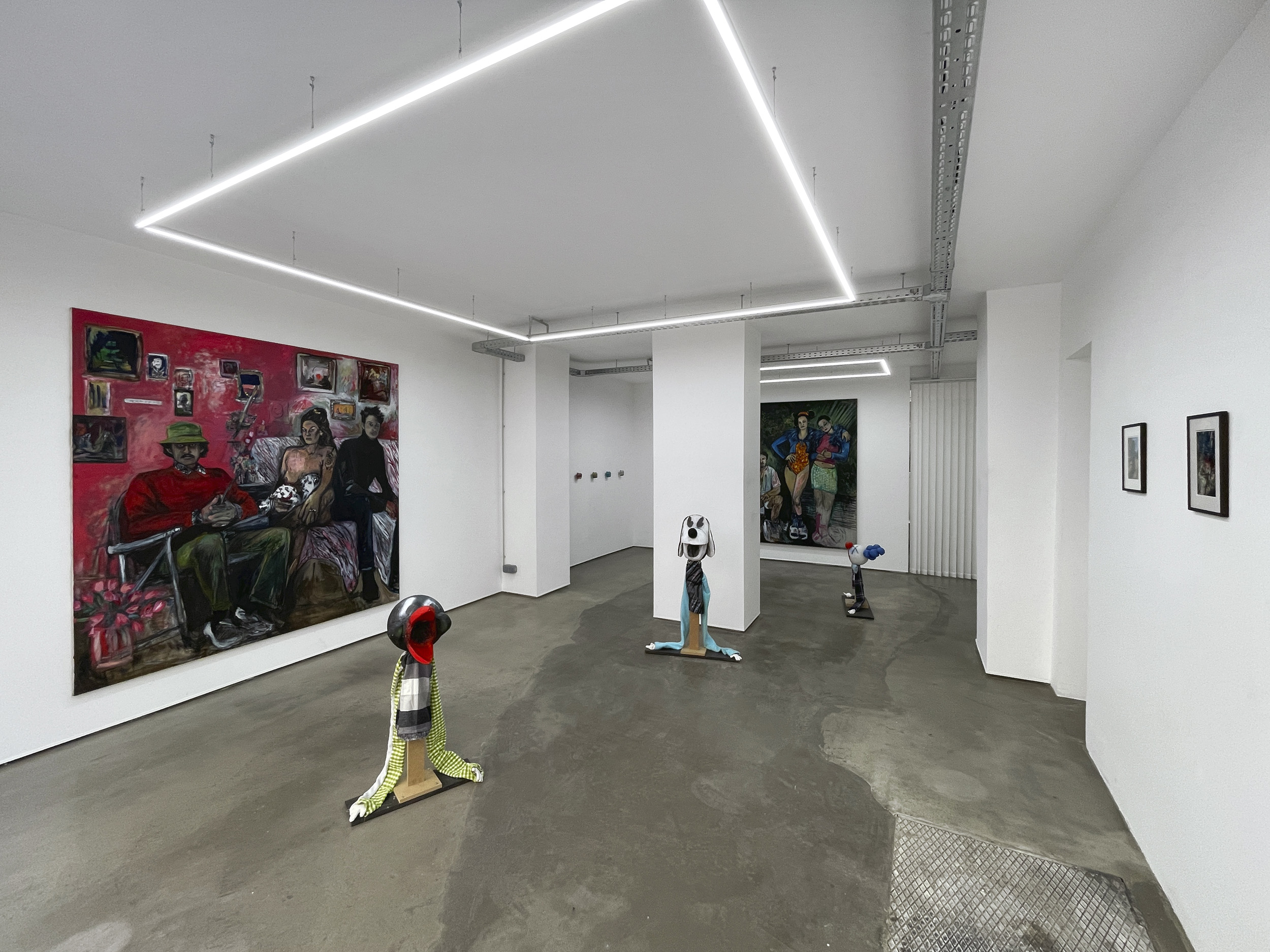
Les causes perdues, 2025
Exo Exo, Paris
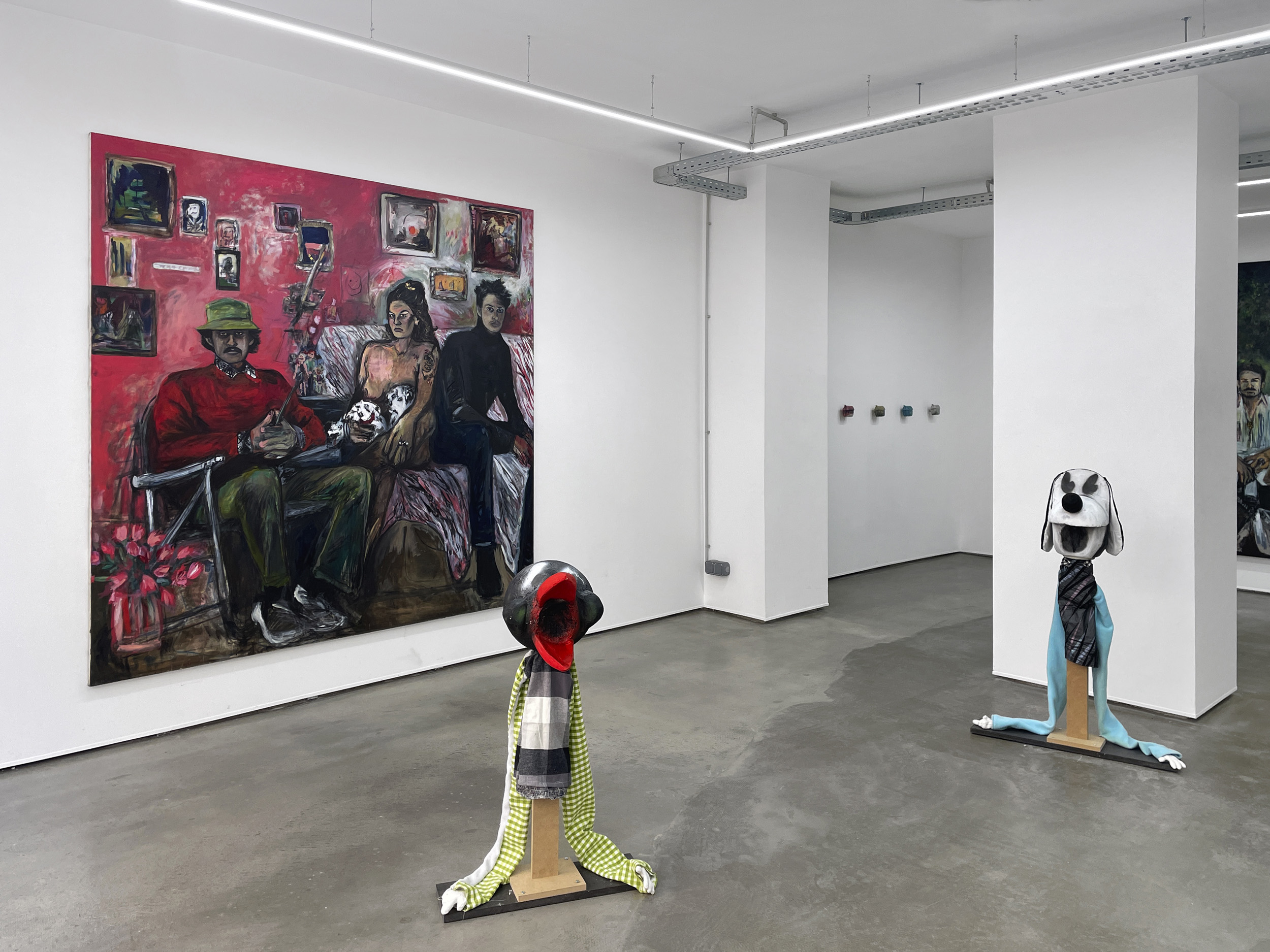
Les causes perdues, 2025
Exo Exo, Paris
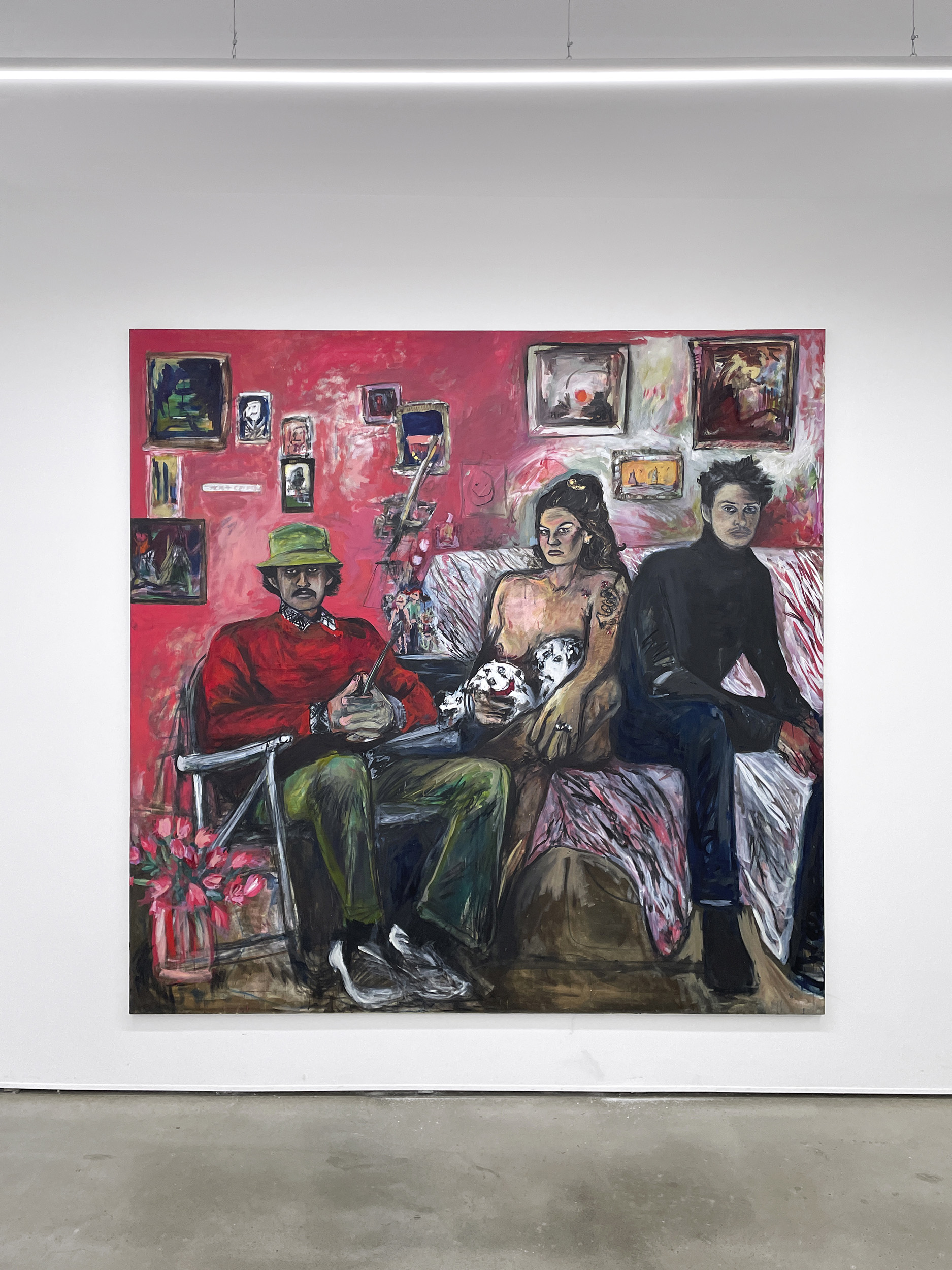
Ludivine Gonthier,
Sacha, Robin et Ludivine 2, 2024
Oil, acrylic and charcoal on canvas
200 x 200 cm
Inquire
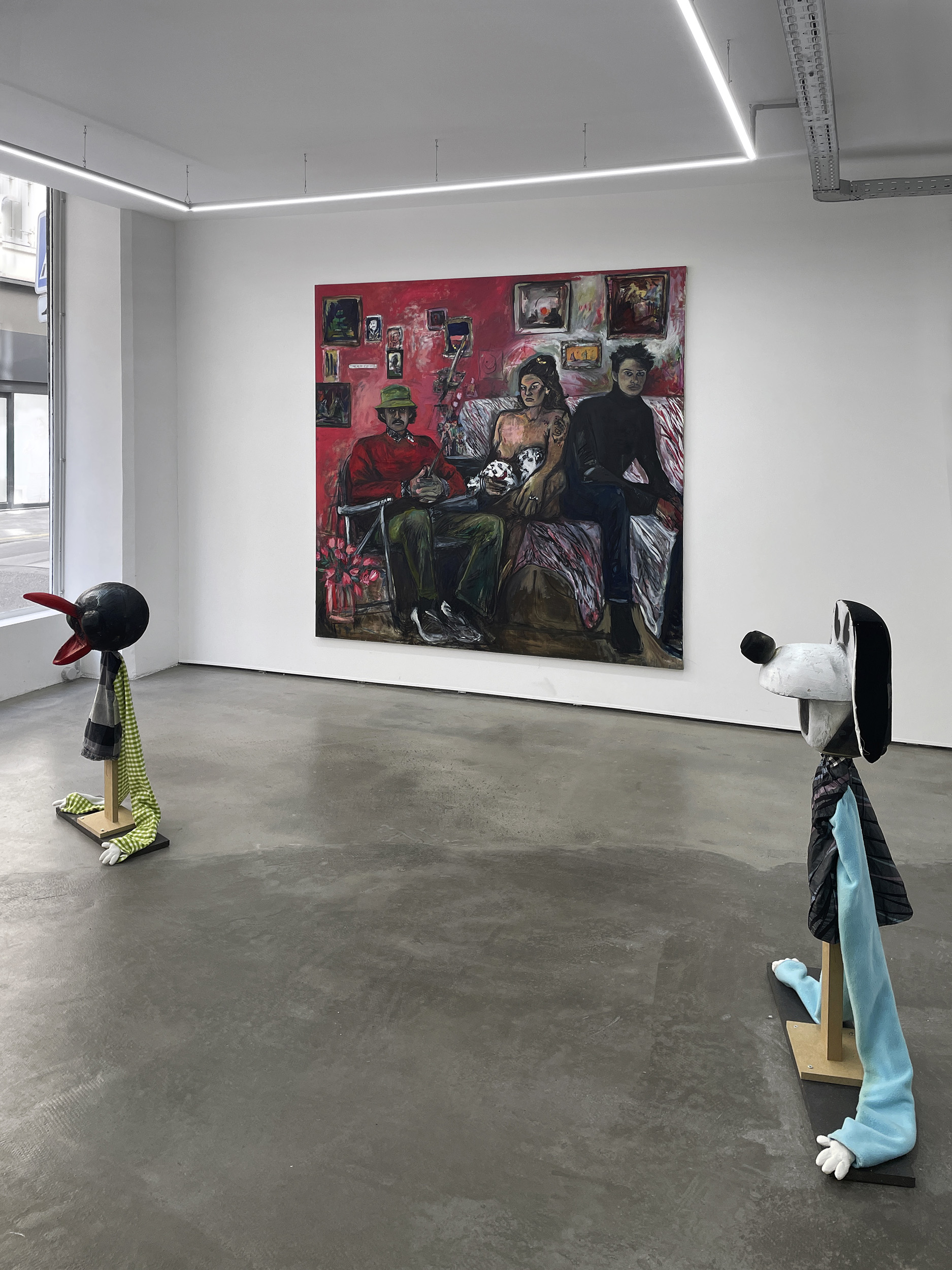
Les causes perdues, 2025
Exo Exo, Paris
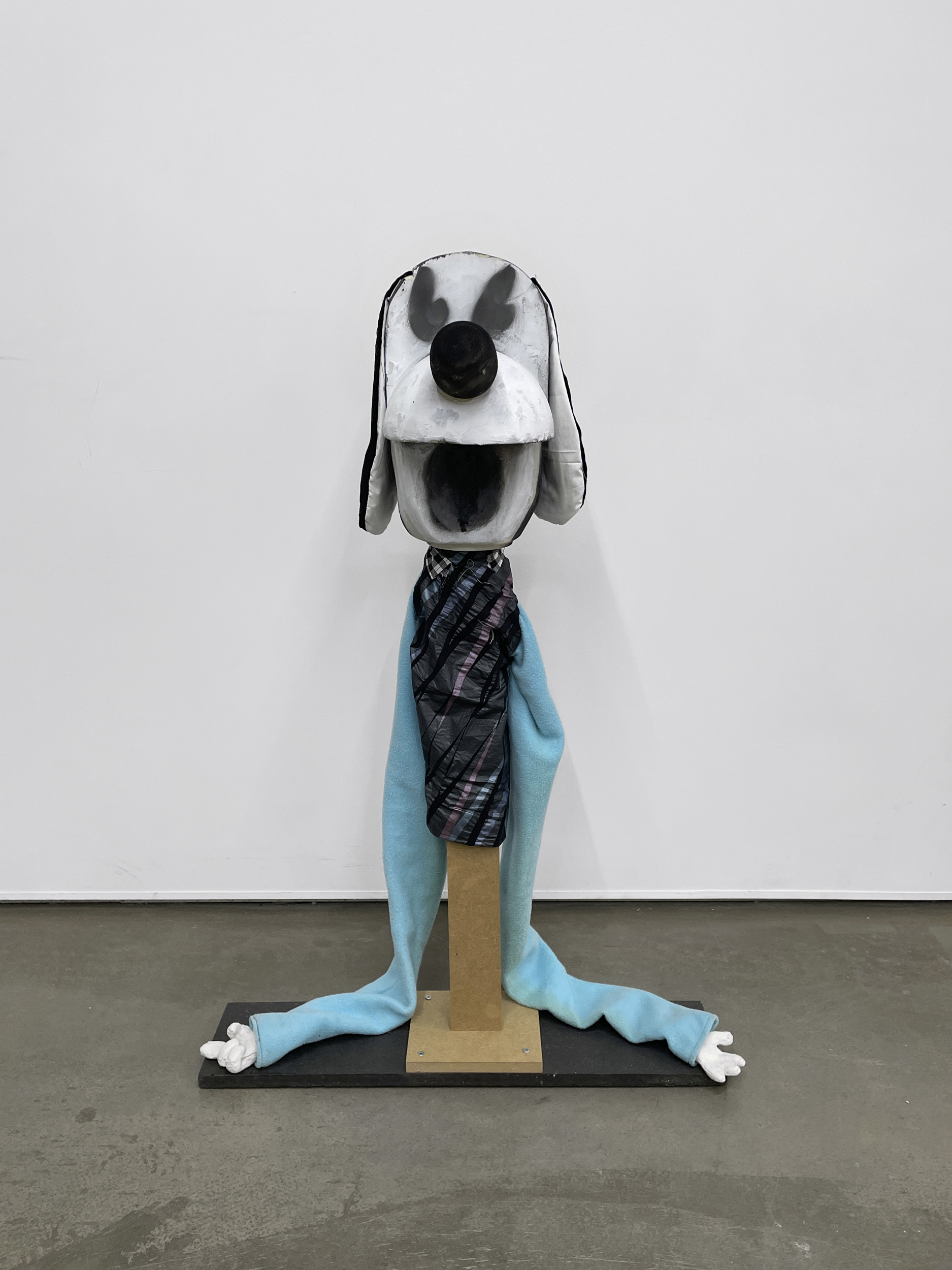
Melody Lu,
Chien, clown, oiseau, réunix pour des lectures performances qui n’auront
pas lieu ici (chien), 2025
Mixed media
105 x 70 x 30 cm
Inquire
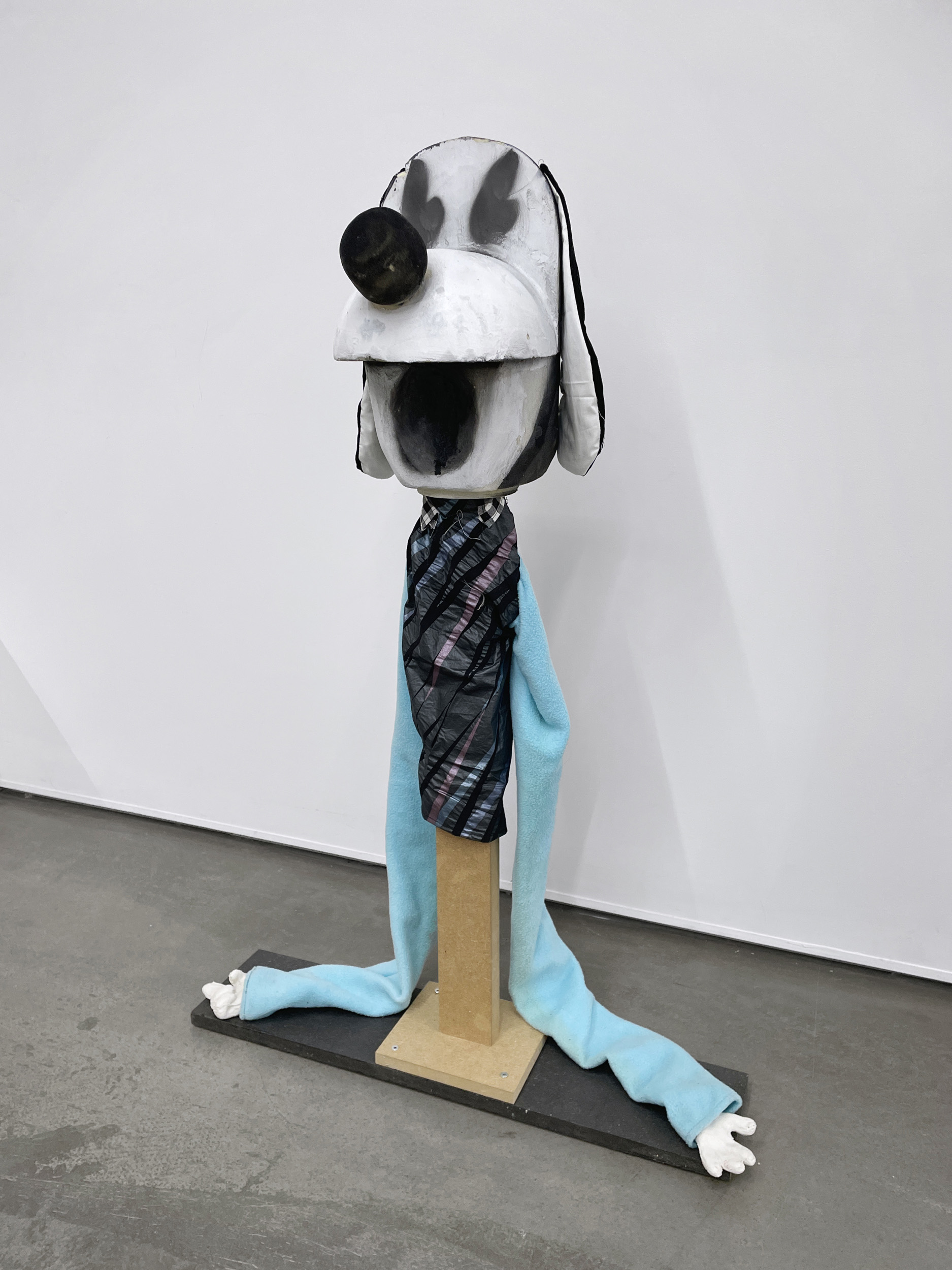
Melody Lu,
Chien, clown, oiseau, réunix pour des lectures performances qui n’auront
pas lieu ici (chien), 2025
Mixed media
105 x 70 x 30 cm
Inquire
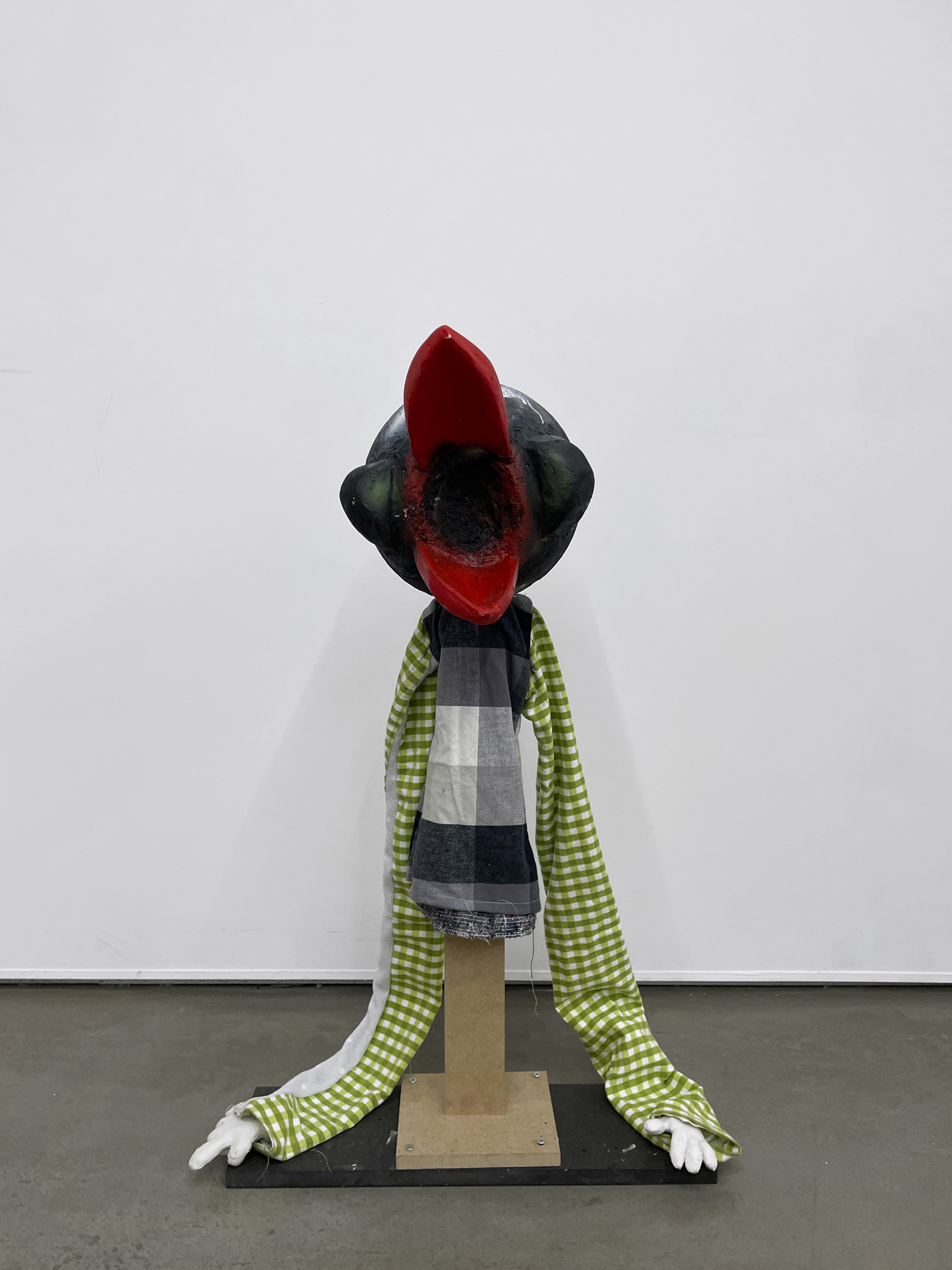
Melody Lu,
Chien, clown, oiseau, réunix pour des lectures performances qui n’auront
pas lieu ici (oiseau), 2025
Mixed media
89 x 54 x 38 cm
Inquire
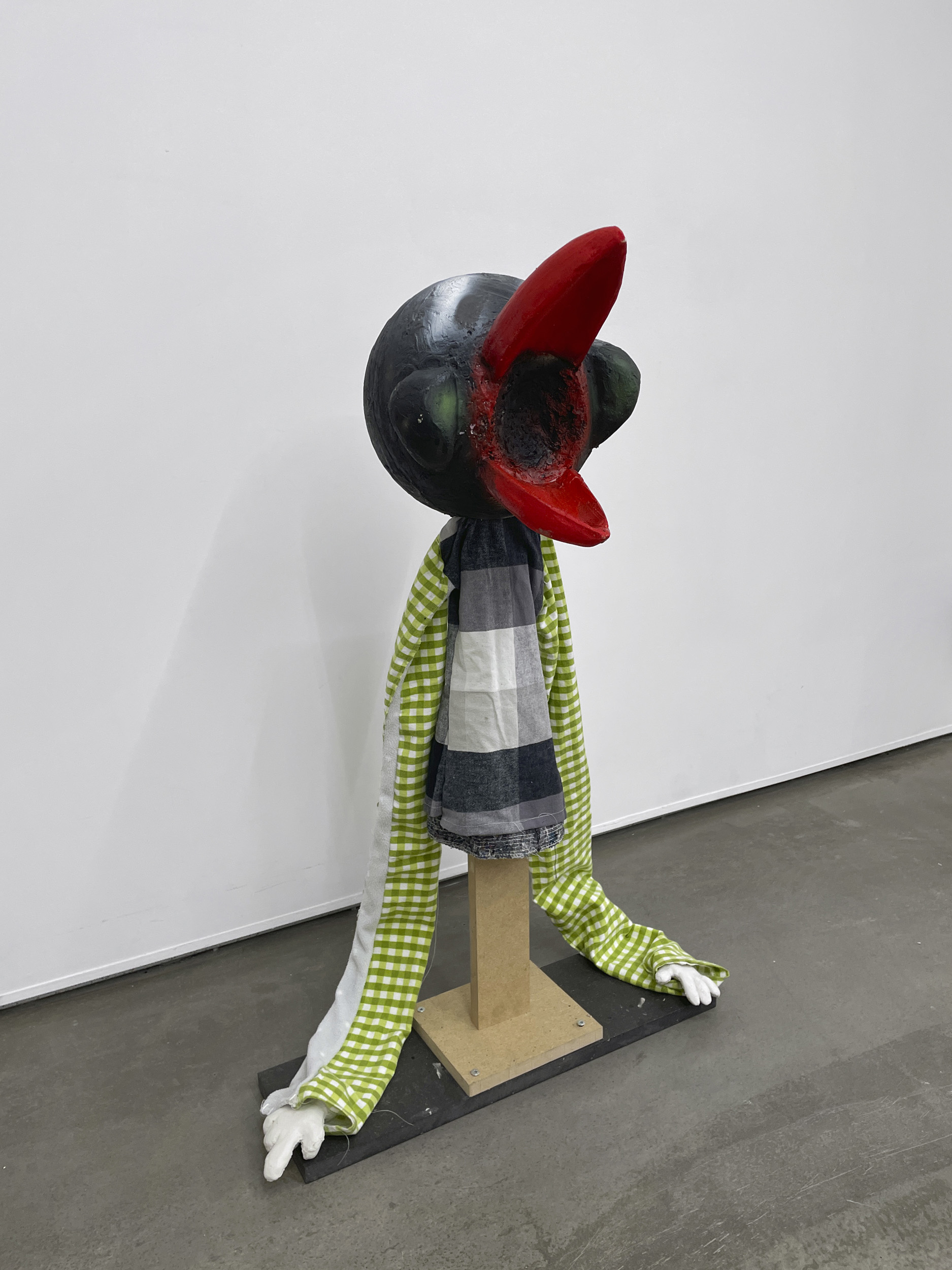
Melody Lu,
Chien, clown, oiseau, réunix pour des lectures performances qui n’auront
pas lieu ici (oiseau), 2025
Mixed media
89 x 54 x 38 cm
Inquire
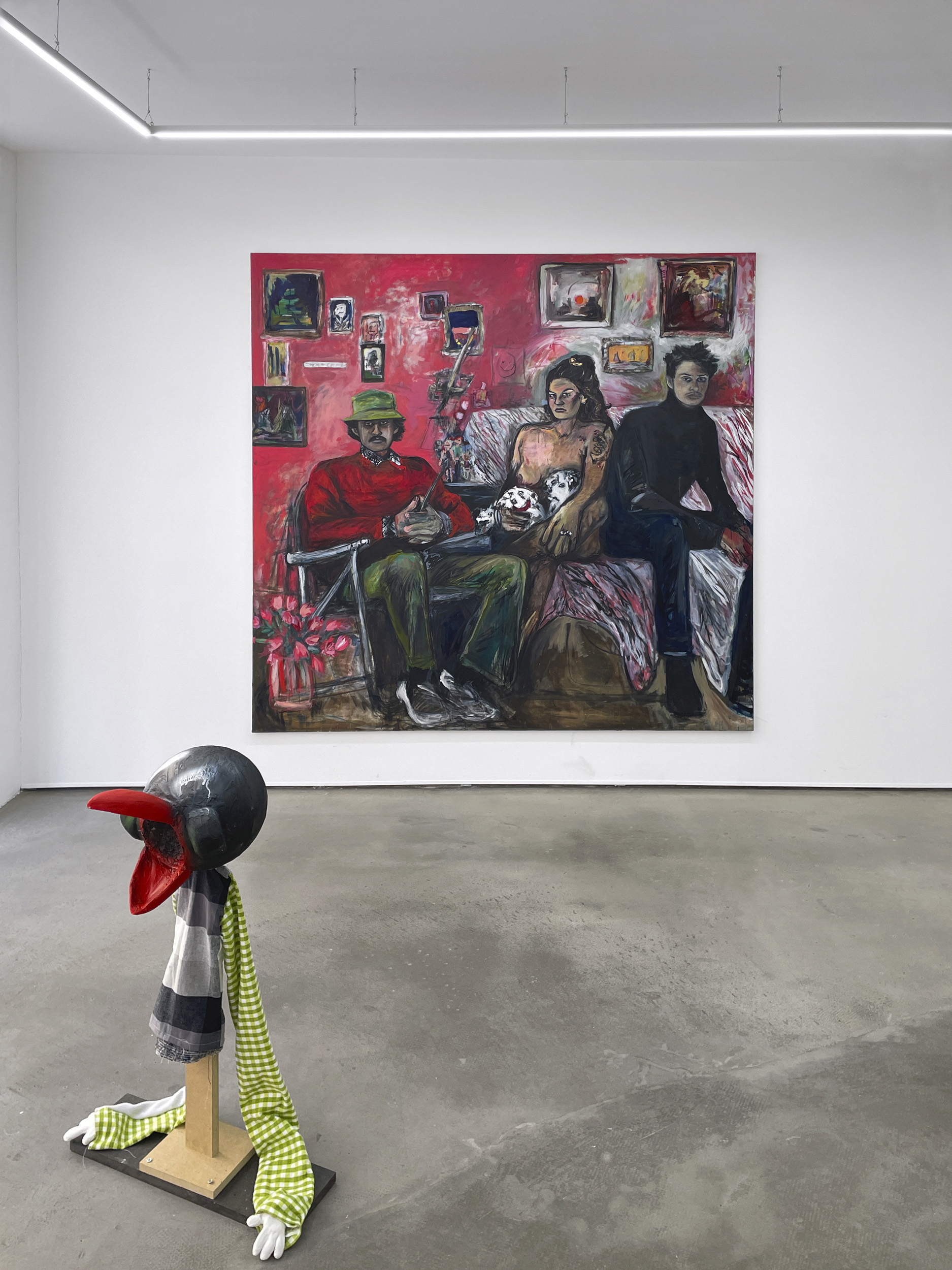
Les causes perdues, 2025
Exo Exo, Paris
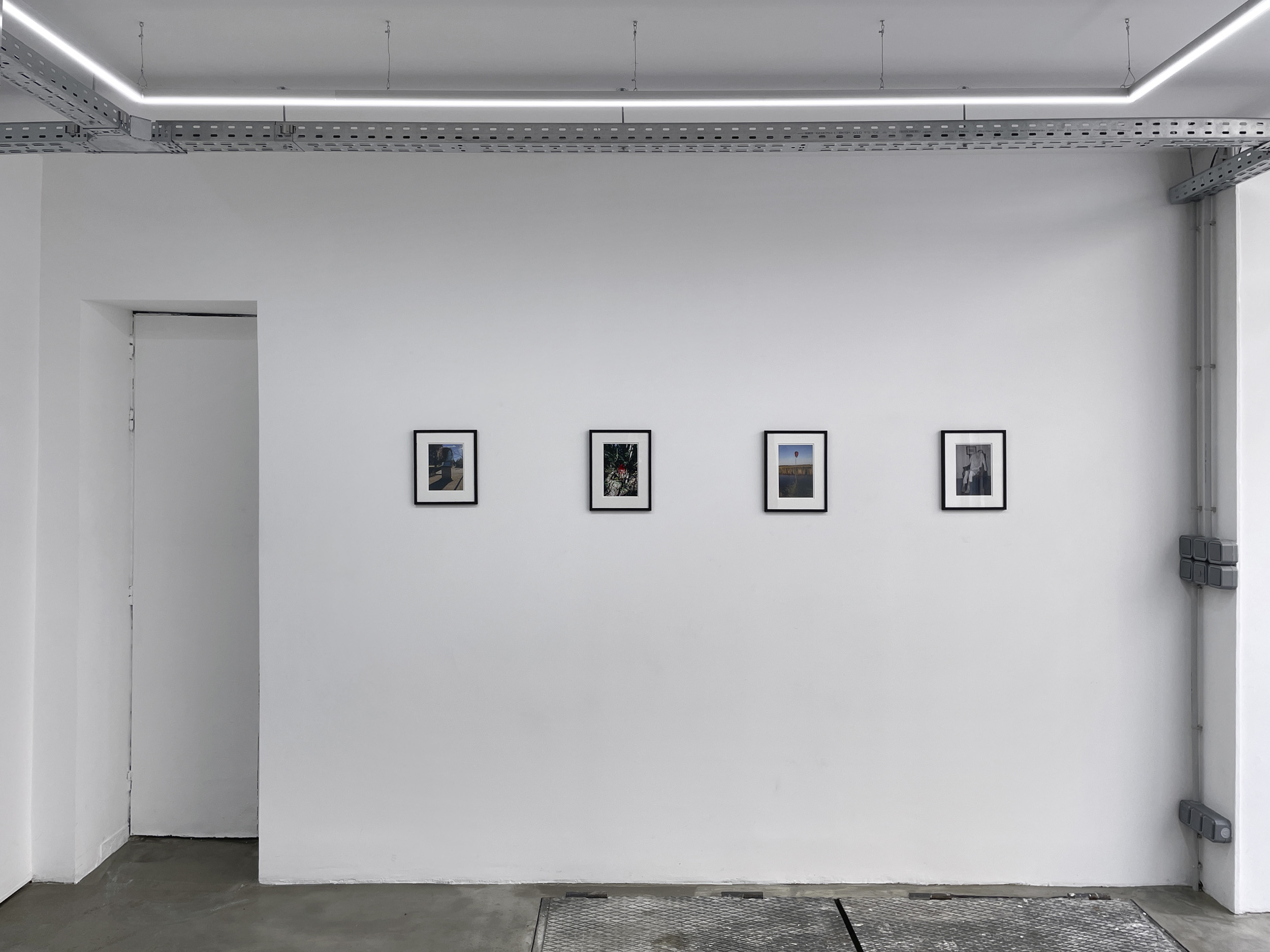
Les causes perdues, 2025
Exo Exo, Paris
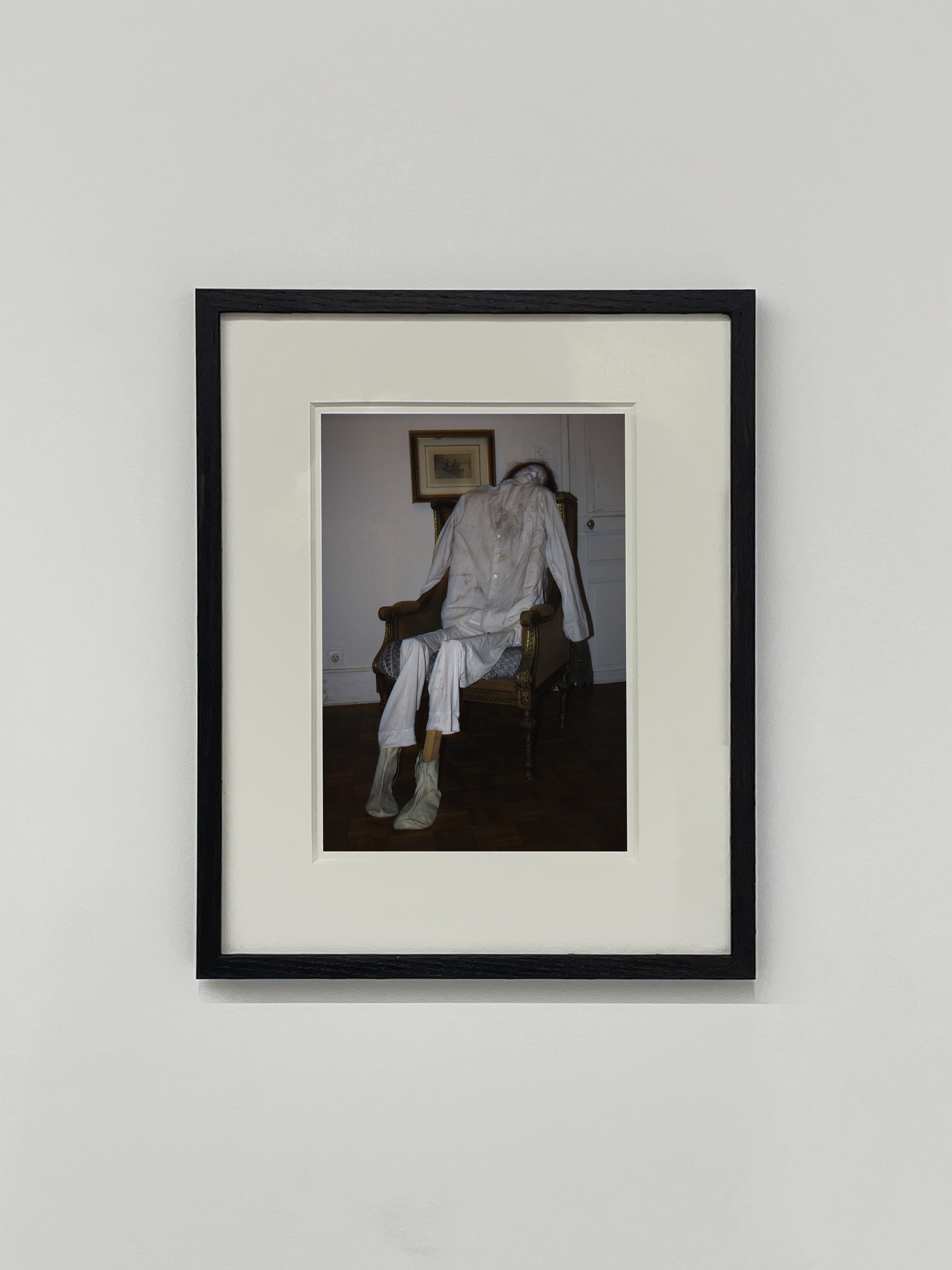
Thomas Cap de Ville,
Ignatius 1, 2025
Lambda print on photographic paper
13 x 19 cm, 23 x 29 cm framed
Edition of 3 + 1 AP
Inquire
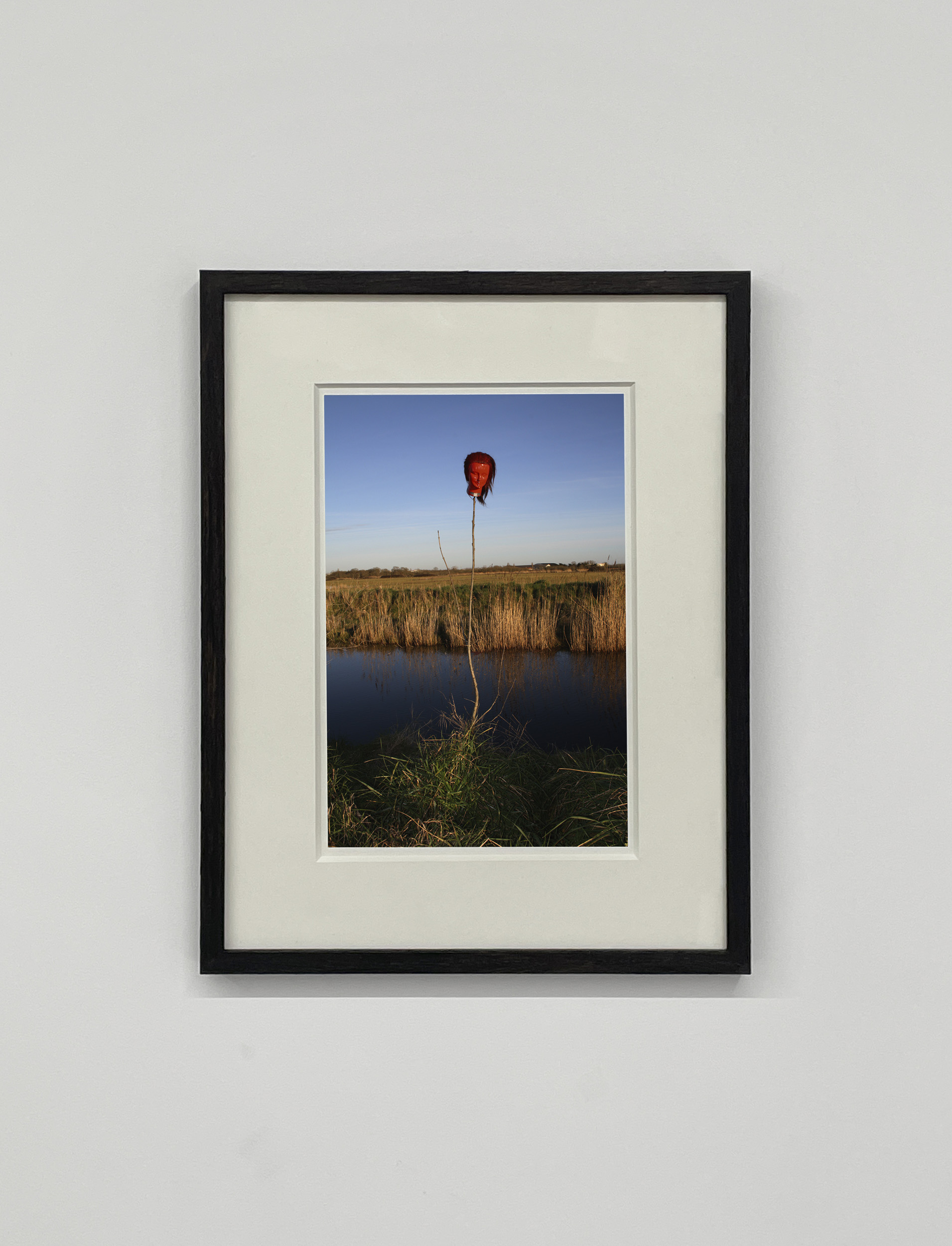
Thomas Cap de Ville,
Gordelio 1, 2025
Lambda print on photographic paper
13 x 19 cm, 23 x 29 cm framed
Edition of 3 + 1 AP
Inquire
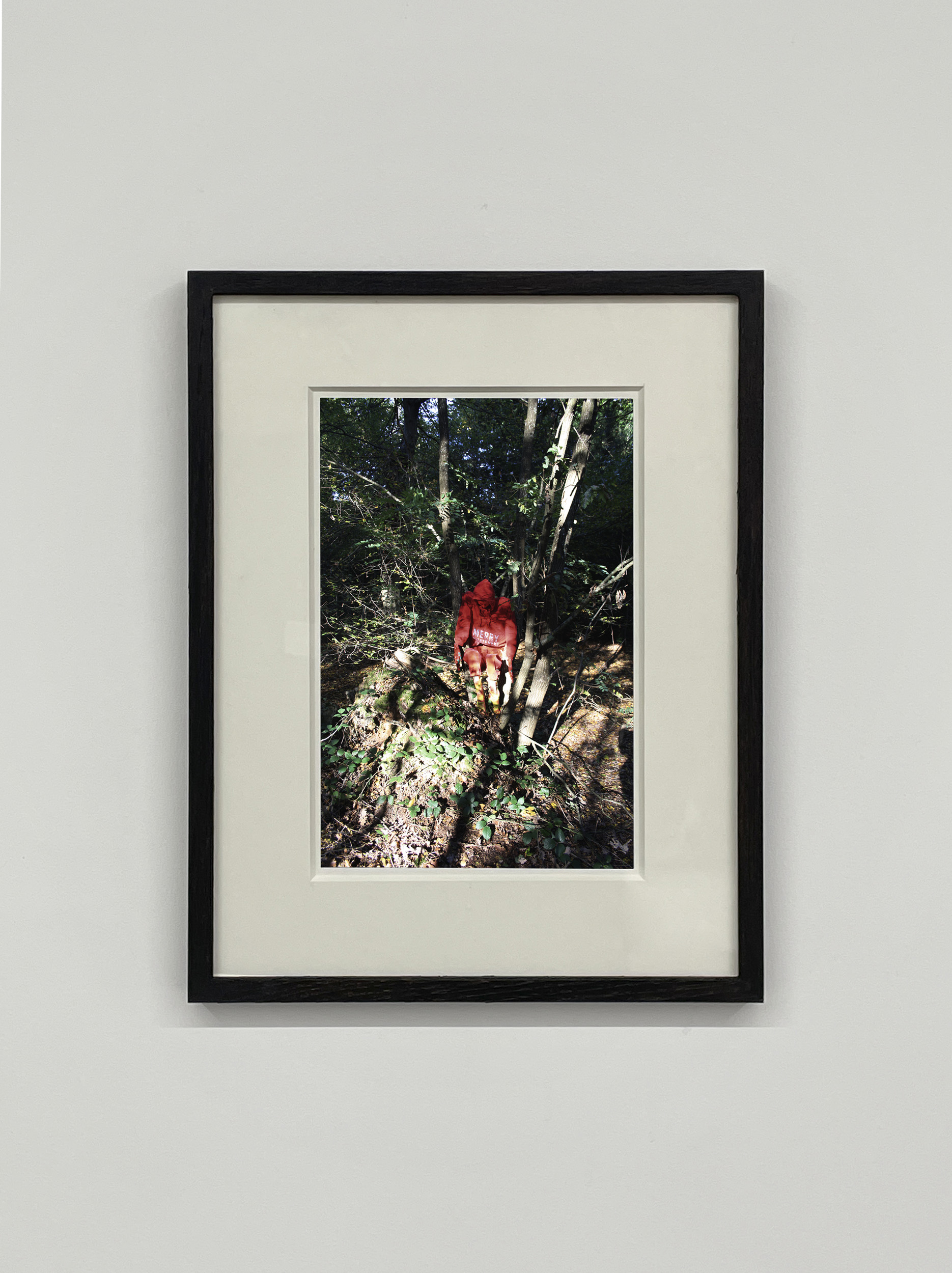
Thomas Cap de Ville,
Gordelio 2, 2025
Lambda print on photographic paper
13 x 19 cm, 23 x 29 cm framed
Edition of 3 + 1 AP
Inquire
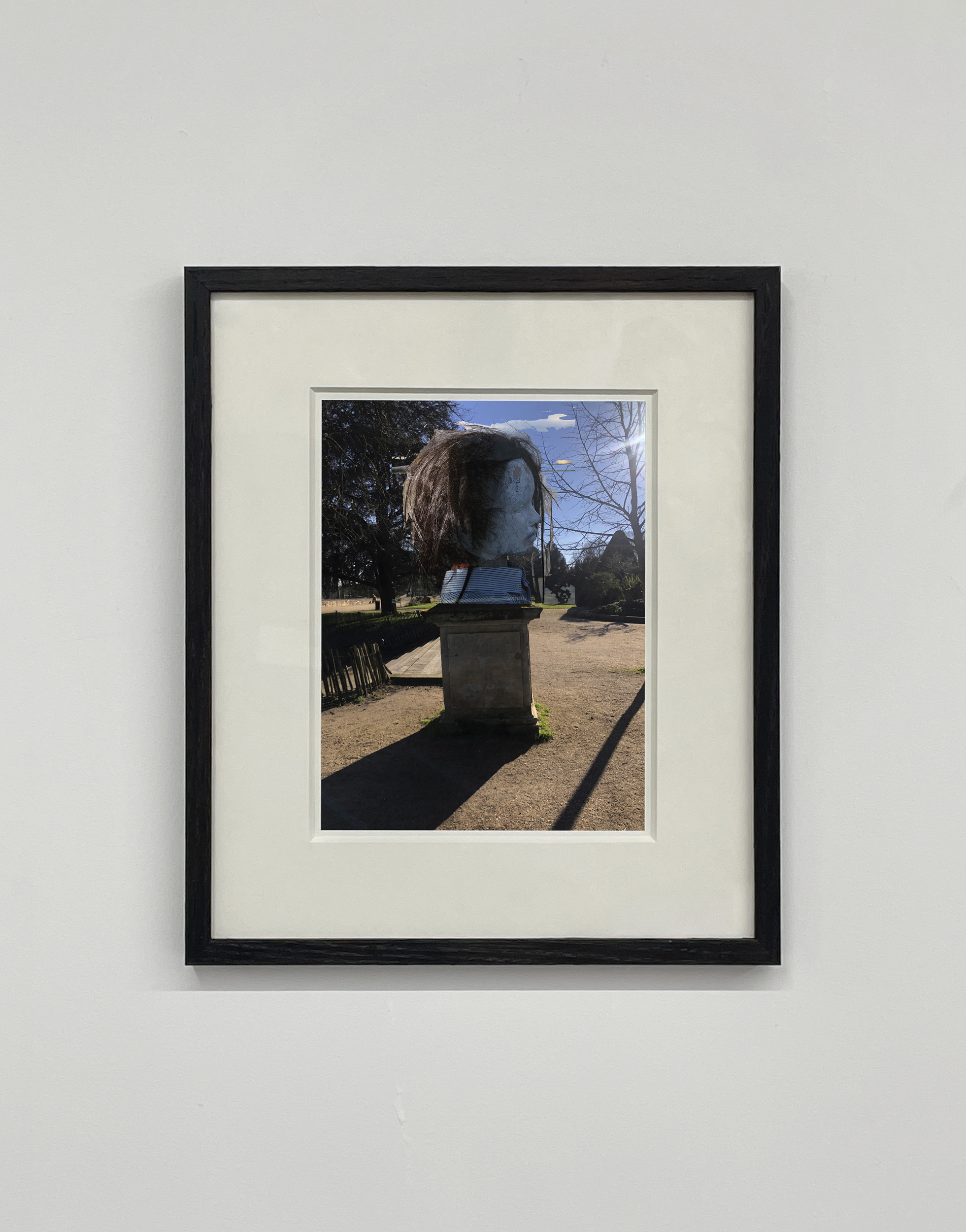
Thomas Cap de Ville,
Ignatius 2, 2025
Lambda print on photographic paper
13 x 17 cm, 23 x 27 cm framed
Edition of 3 + 1 AP
Inquire
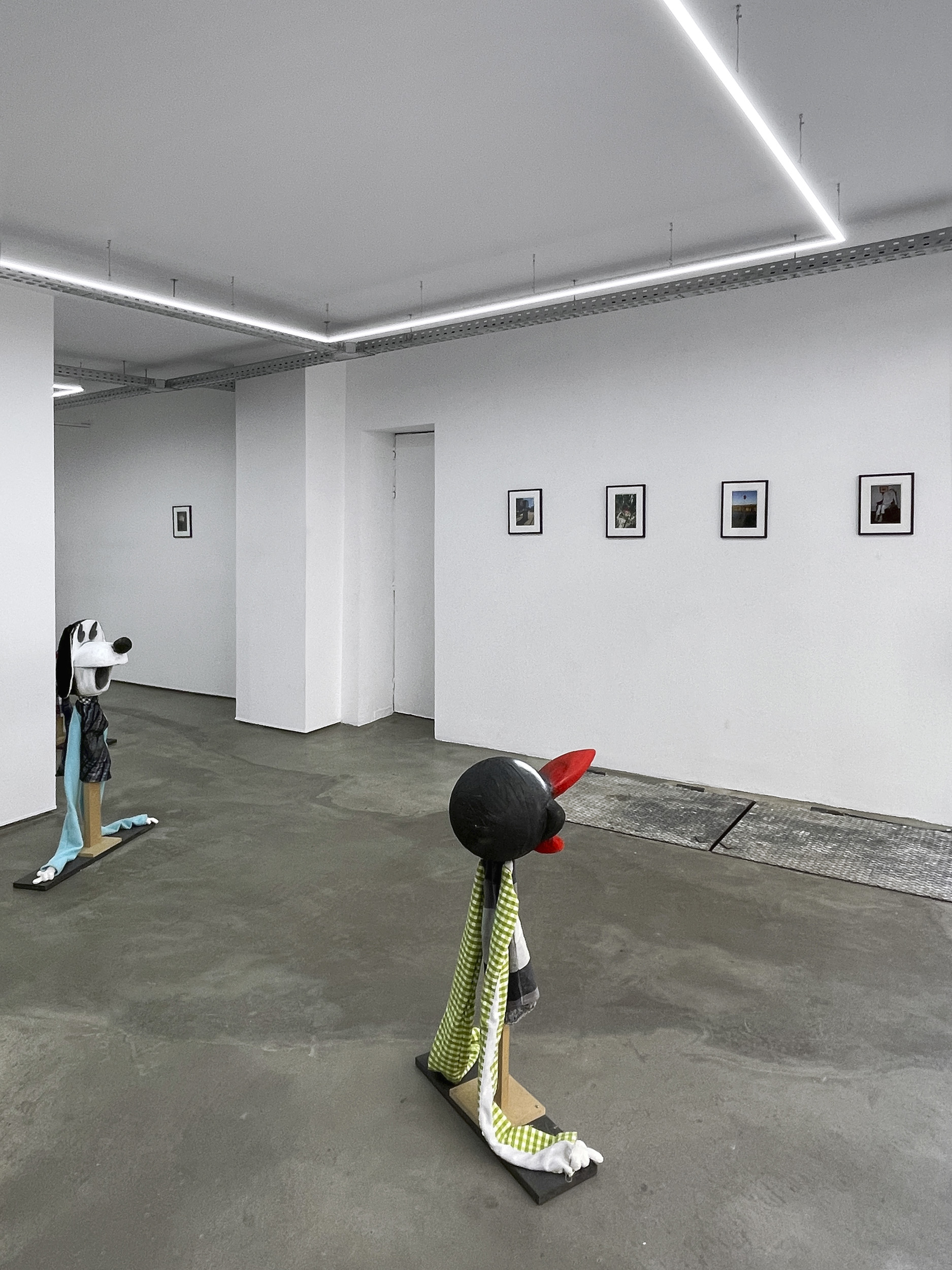
Les causes perdues, 2025
Exo Exo, Paris
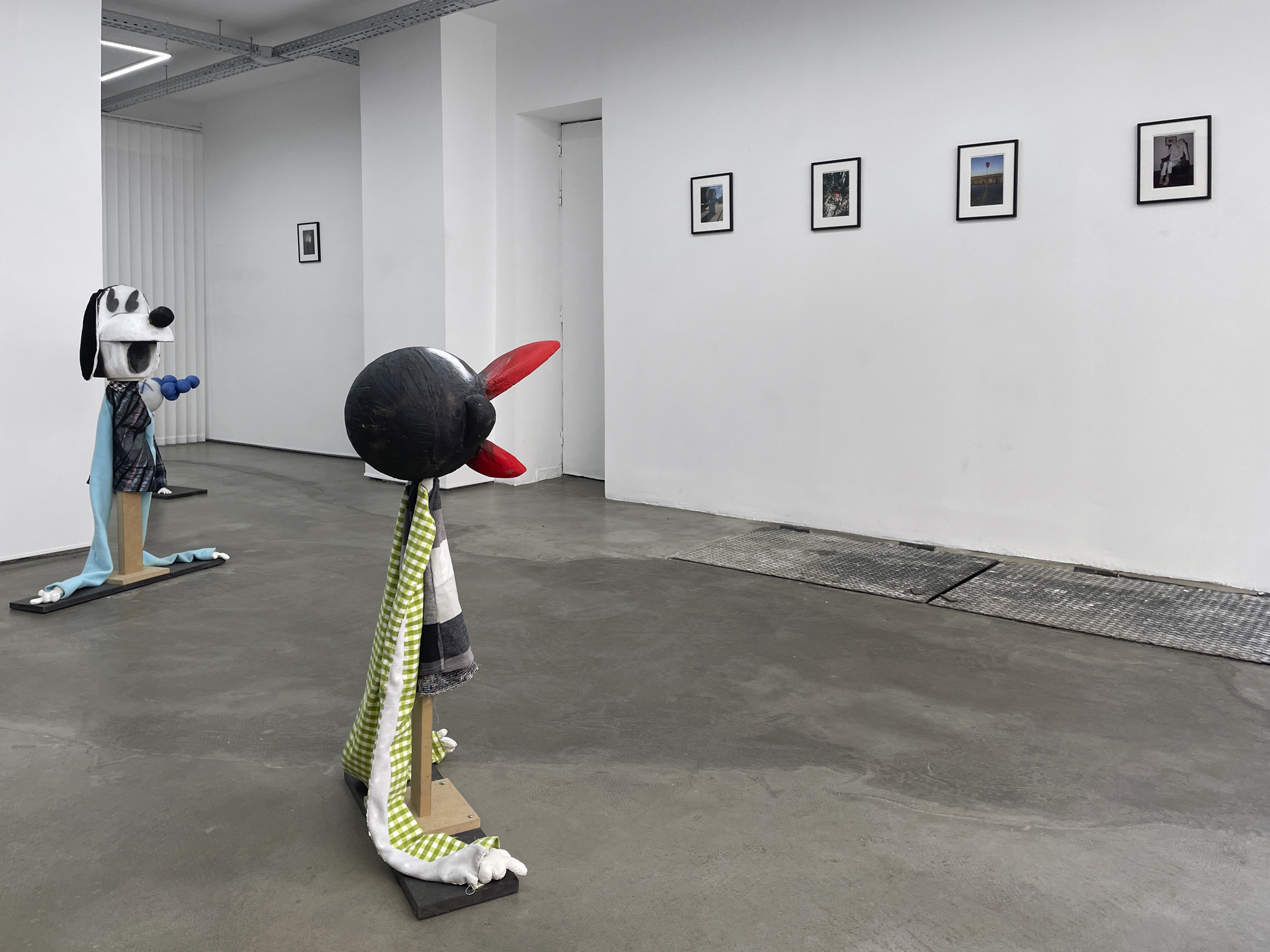
Les causes perdues, 2025
Exo Exo, Paris
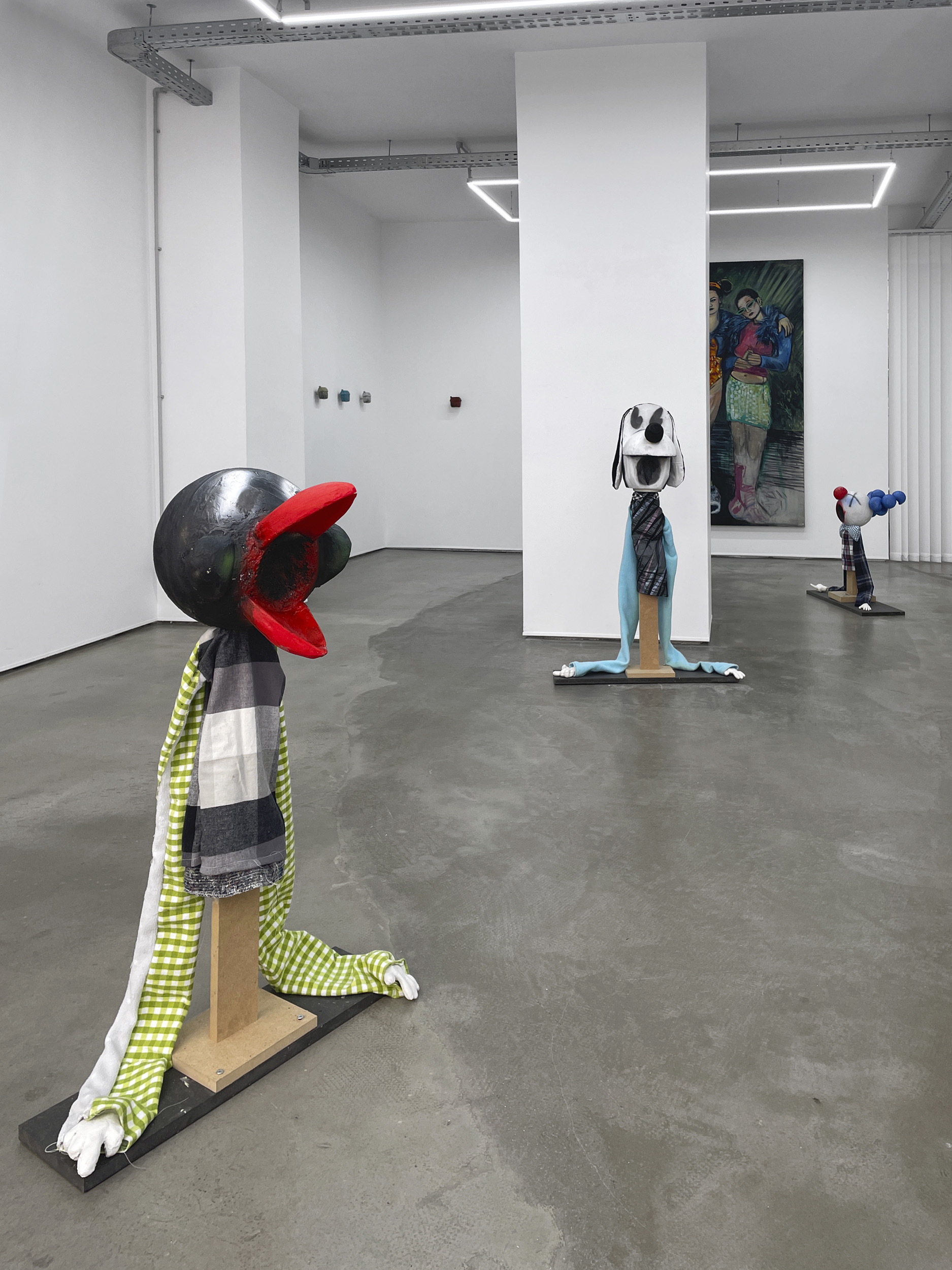
Les causes perdues, 2025
Exo Exo, Paris
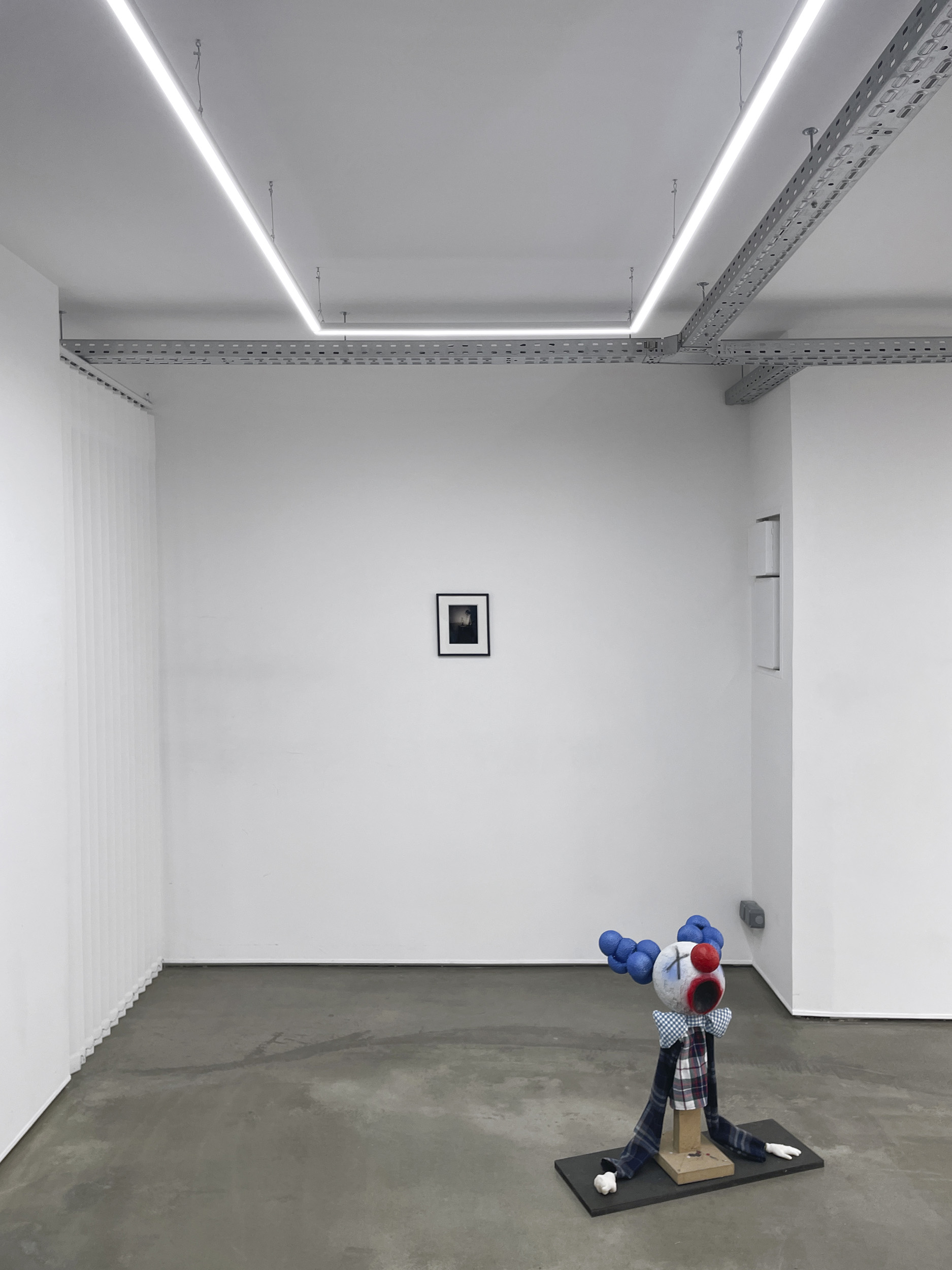
Les causes perdues, 2025
Exo Exo, Paris
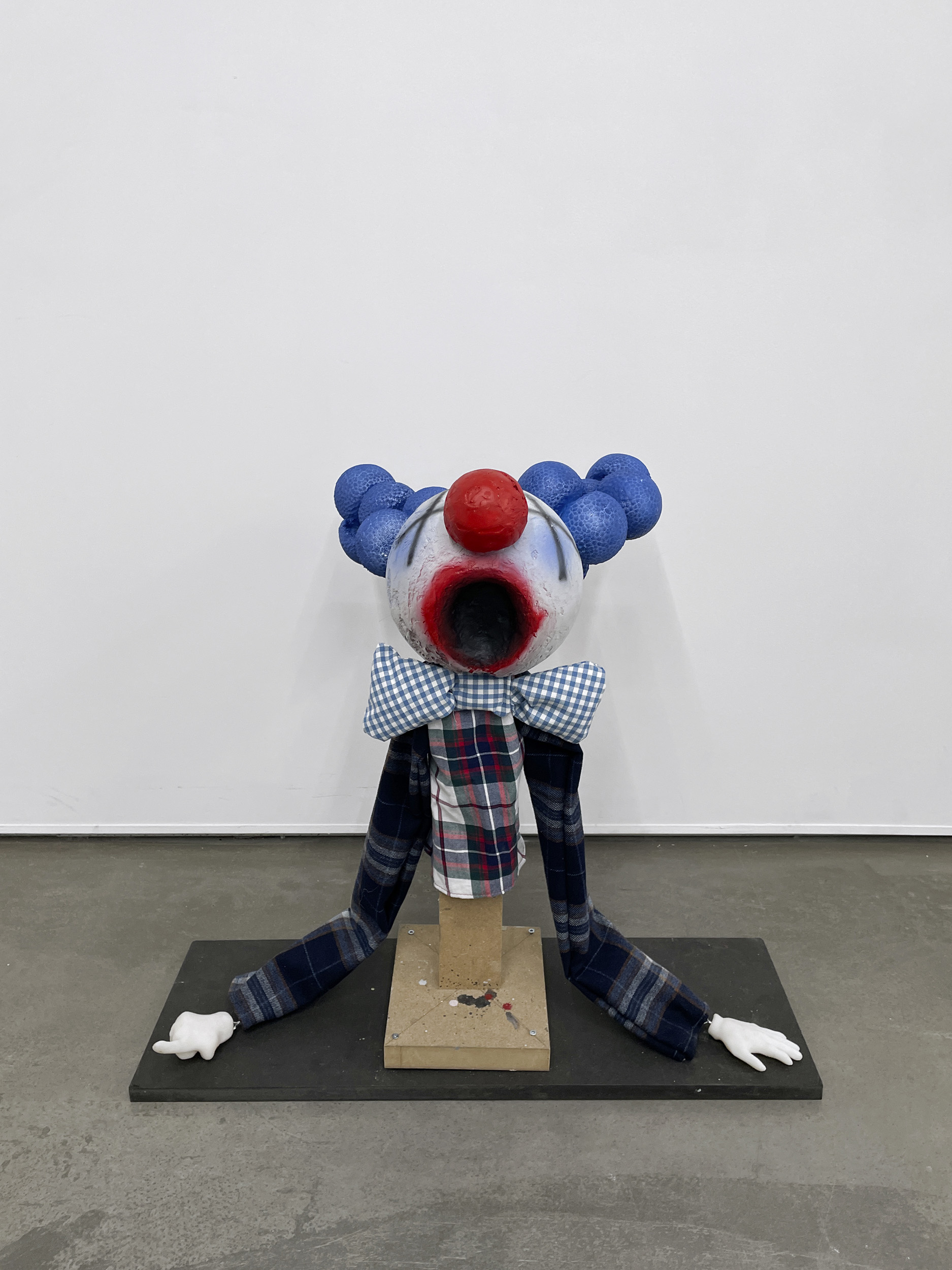
Melody Lu,
Chien, clown, oiseau, réunix pour des lectures performances qui n’auront
pas lieu ici (clown), 2025
Mixed media
67 x 73 x 37 cm
Inquire
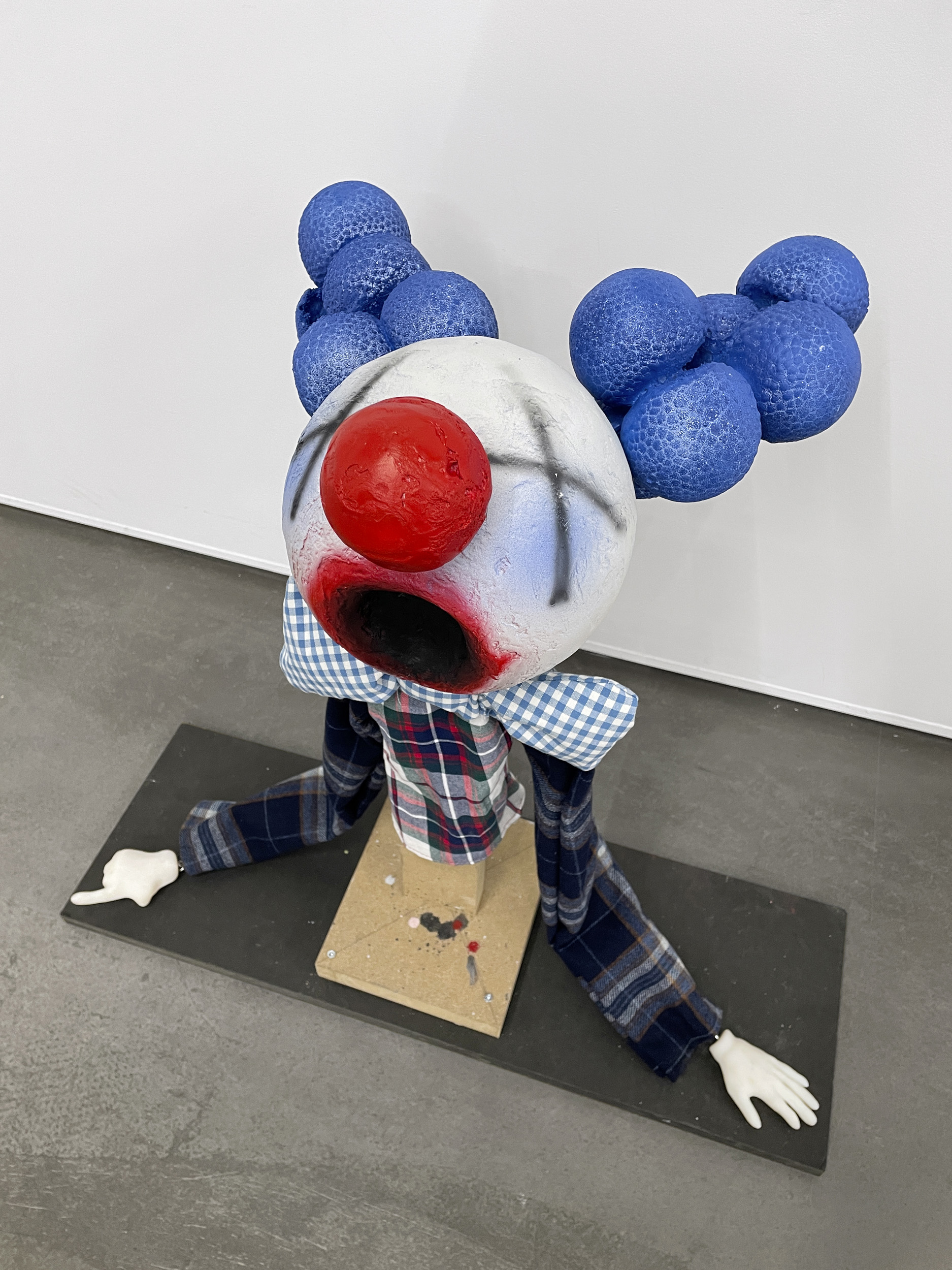
Melody Lu,
Chien, clown, oiseau, réunix pour des lectures performances qui n’auront
pas lieu ici (clown), 2025
Mixed media
67 x 73 x 37 cm
Inquire
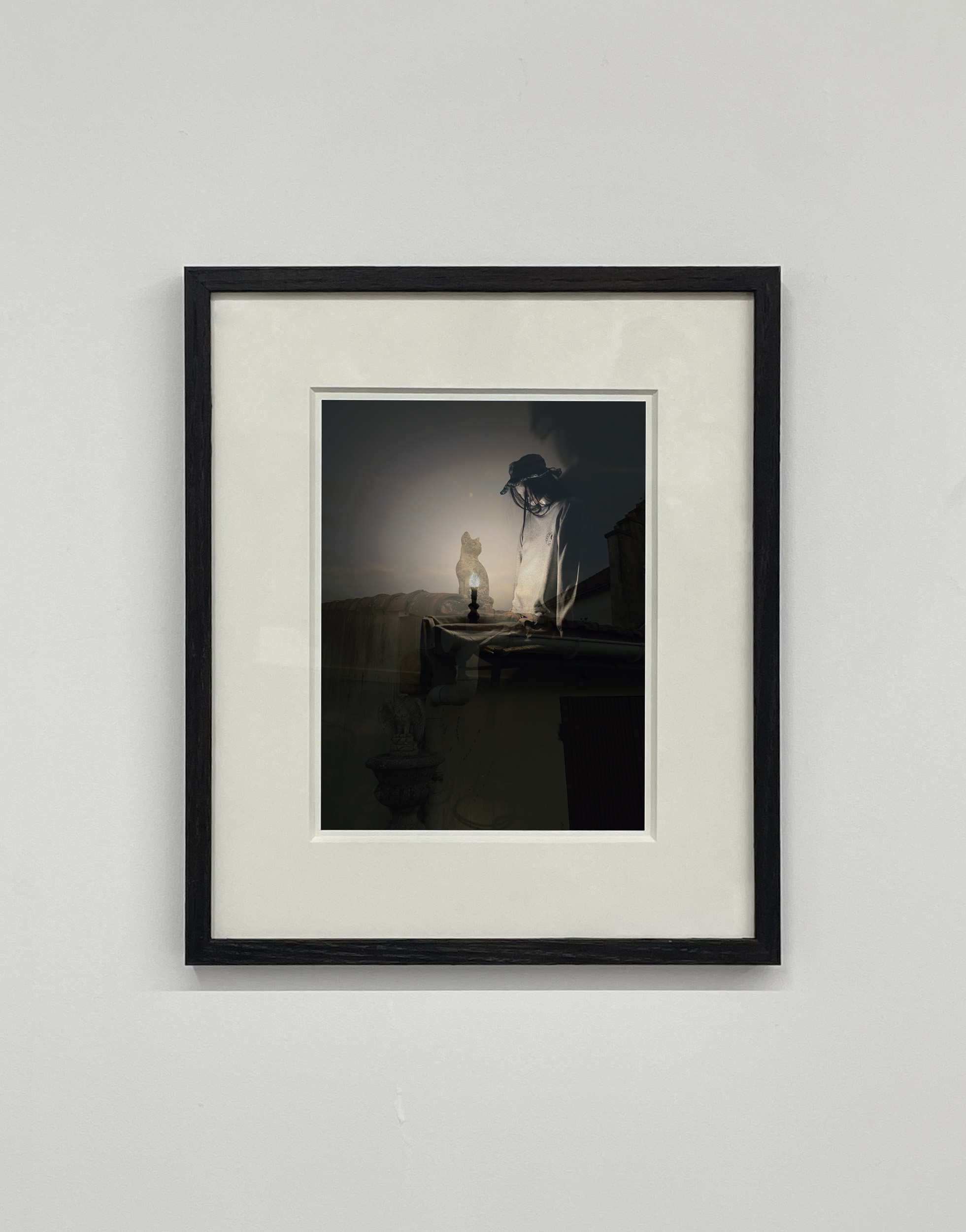
Thomas Cap de Ville,
Ignatius 3, 2025
Lambda print on photographic paper
13 x 17 cm, 23 x 27 cm framed
Edition of 3 + 1 AP
Inquire
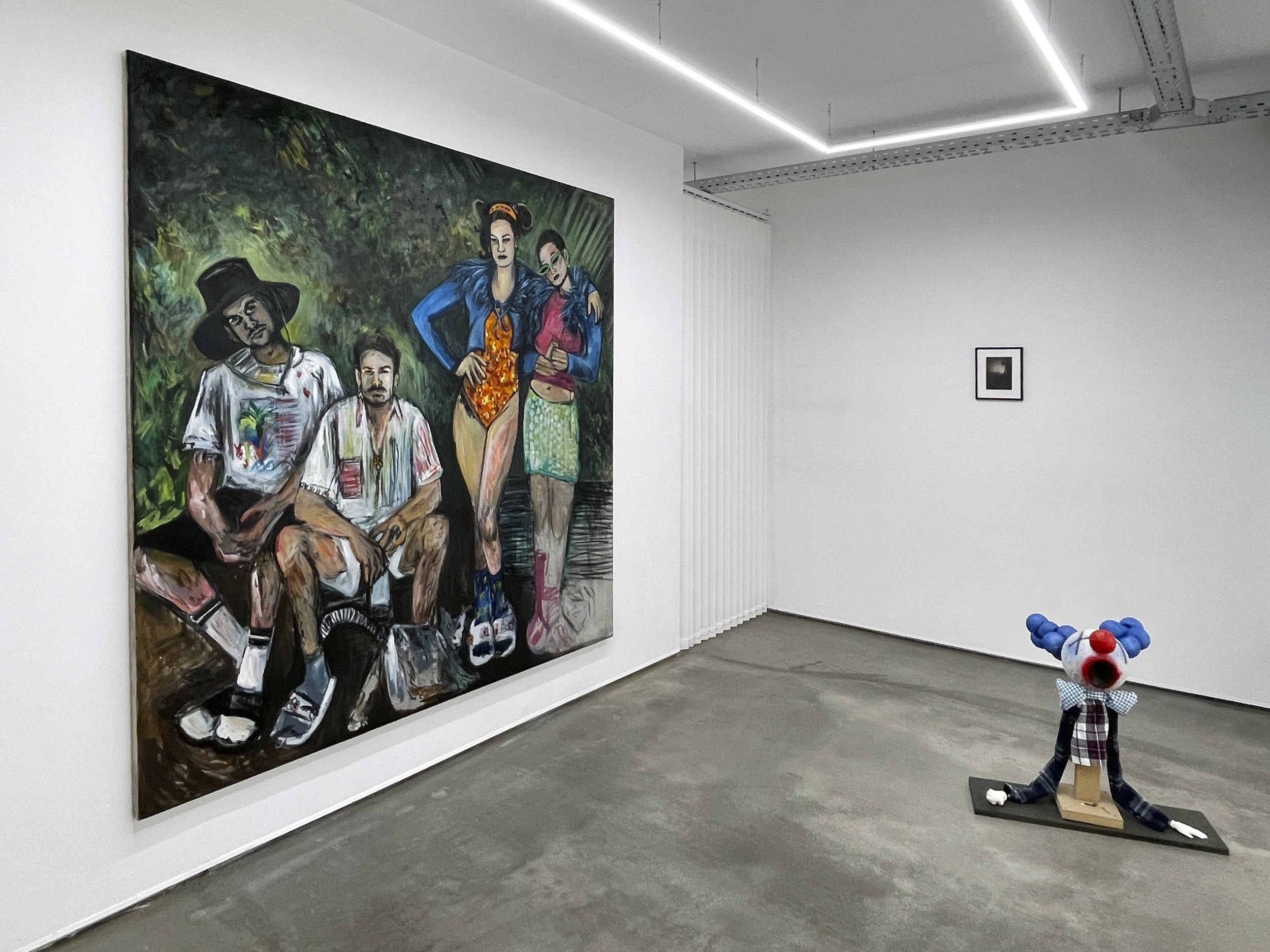
Les causes perdues, 2025
Exo Exo, Paris
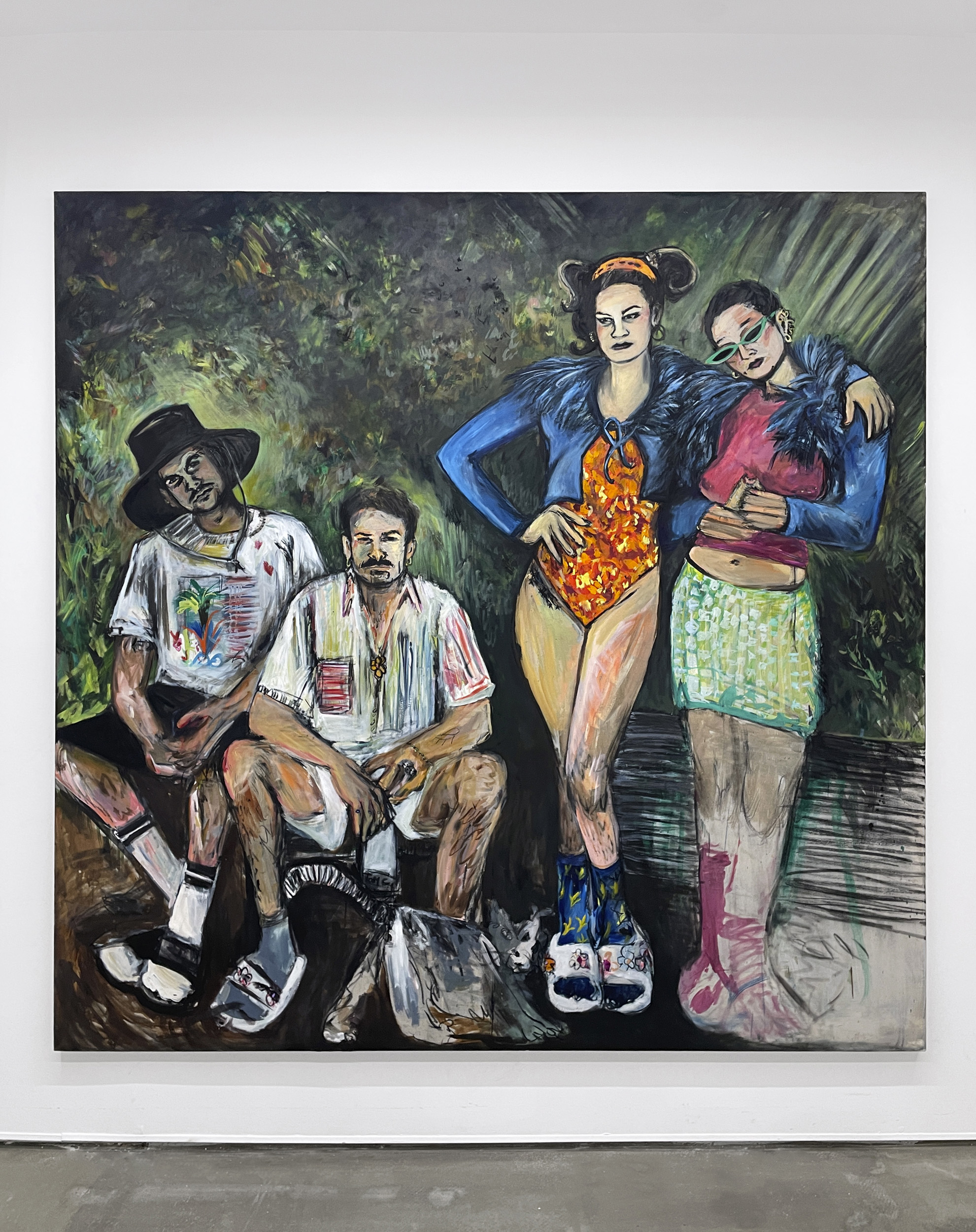
Ludivine Gonthier,
Pierre, Charles, Marie et Ludivine, 2025
Oil, acrylic and charcoal on canvas
200 x 200 cm
Inquire
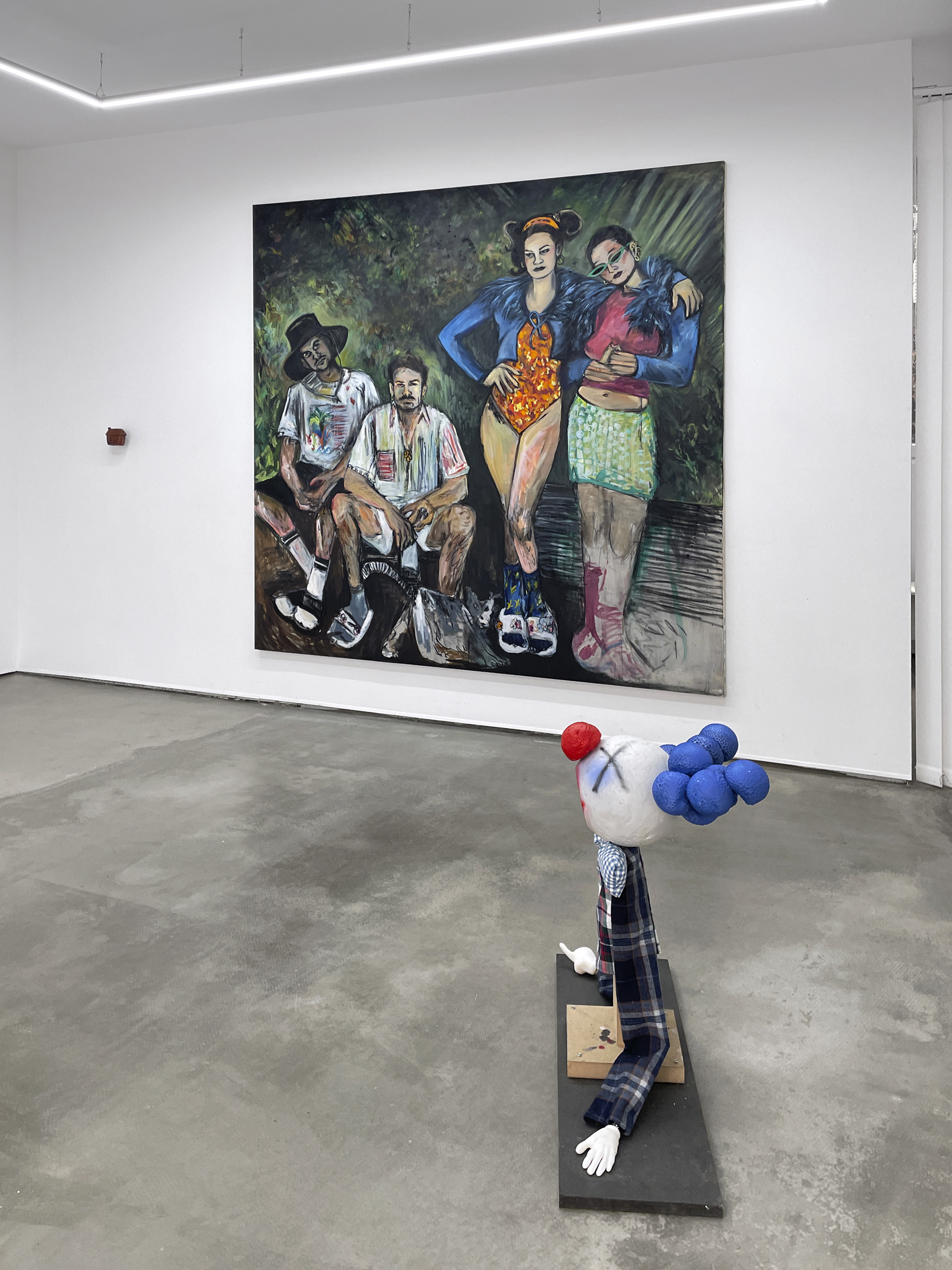
Les causes perdues, 2025
Exo Exo, Paris
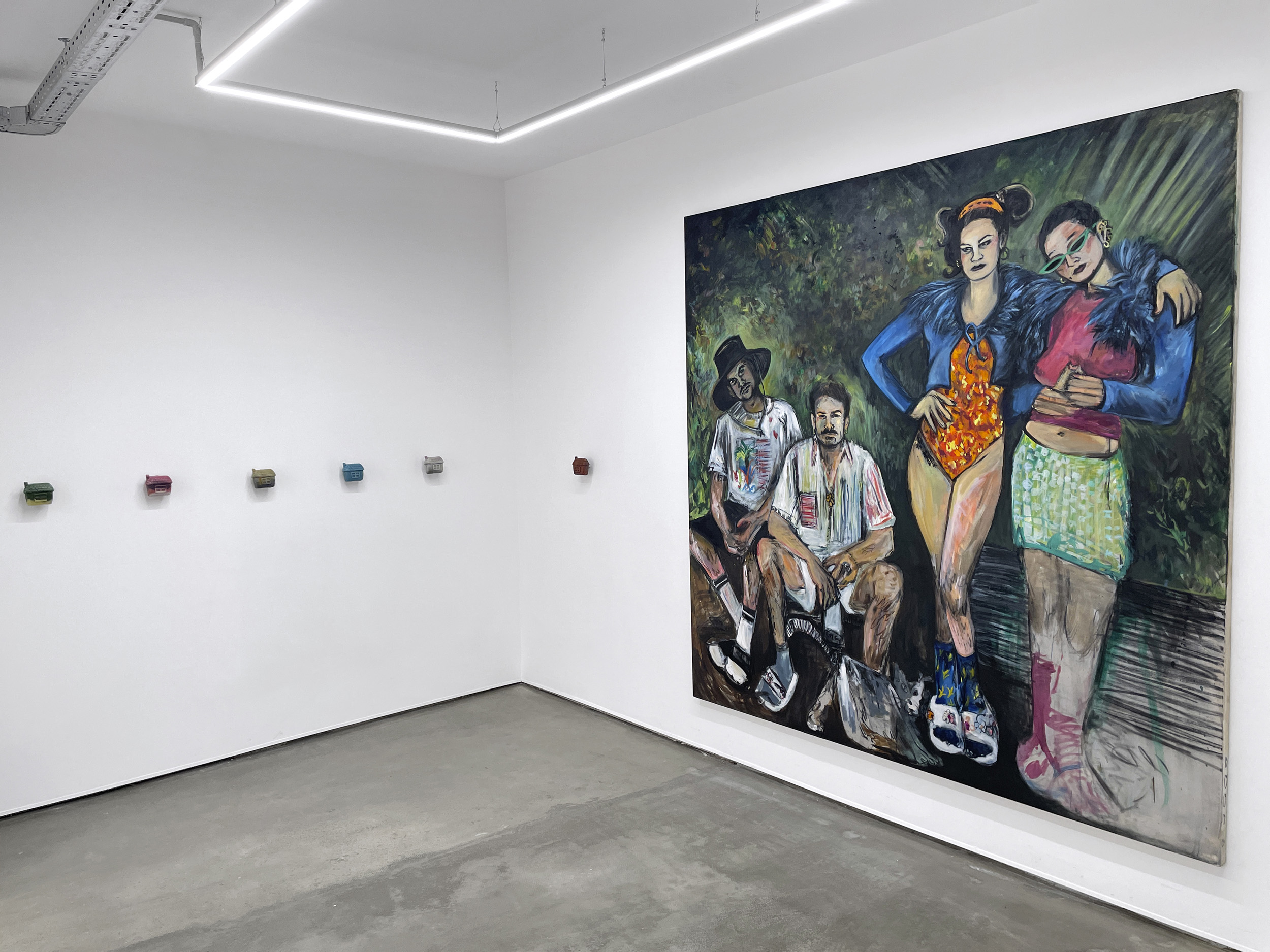
Les causes perdues, 2025
Exo Exo, Paris
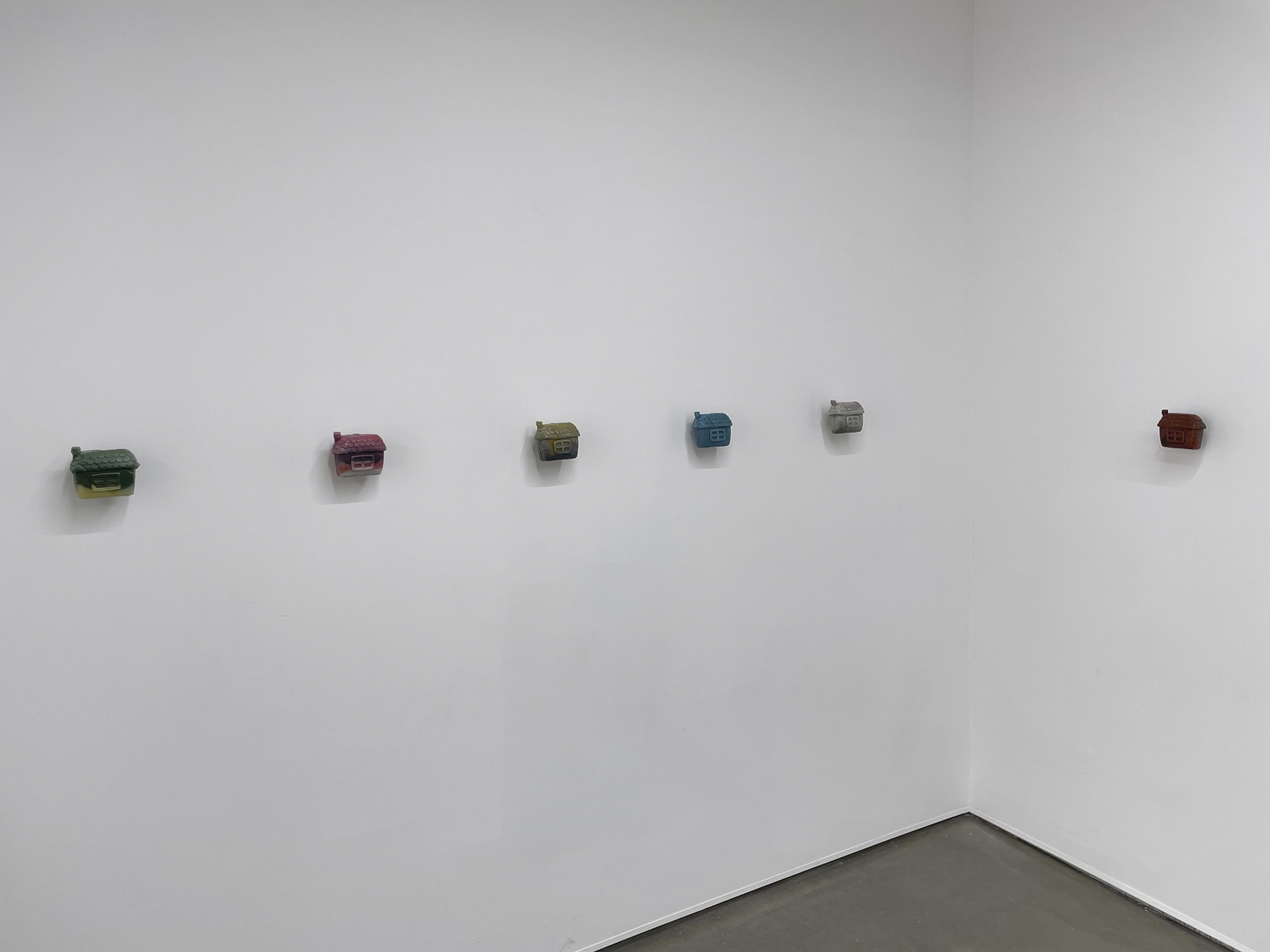
Les causes perdues, 2025
Exo Exo, Paris
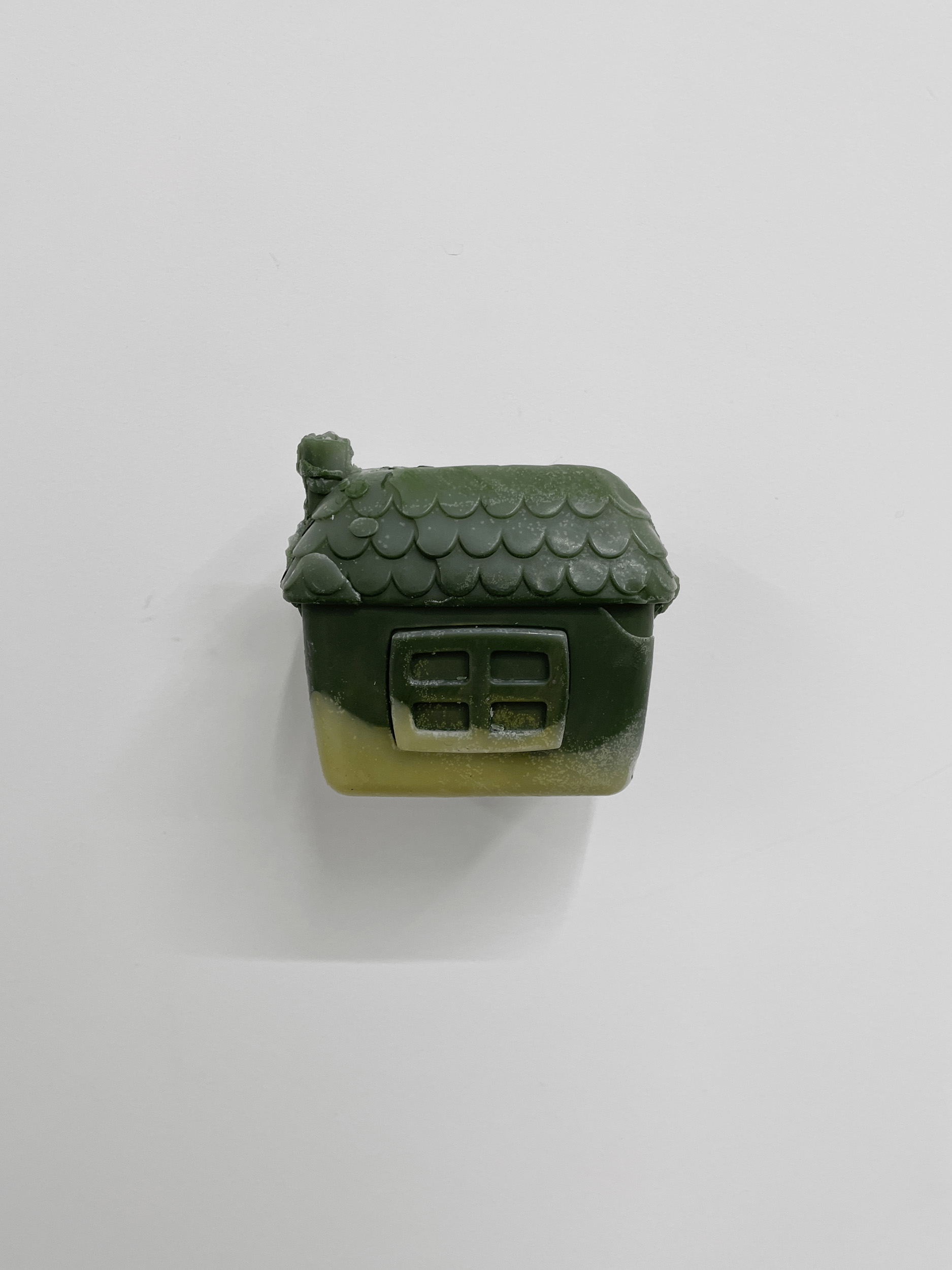
Melody Lu,
Croque souris-chat-trou, the sorrowful little souris, has lost track of
herx home. shex found a juicy carrot and a pretty flower on top of
the mountain. shex wants to carry them down to his friends. can you
show herx how to reach the bottom of the mountain without falling
off the winding path ? 1, 2025
Wax
12 x 8 x 5 cm
Inquire
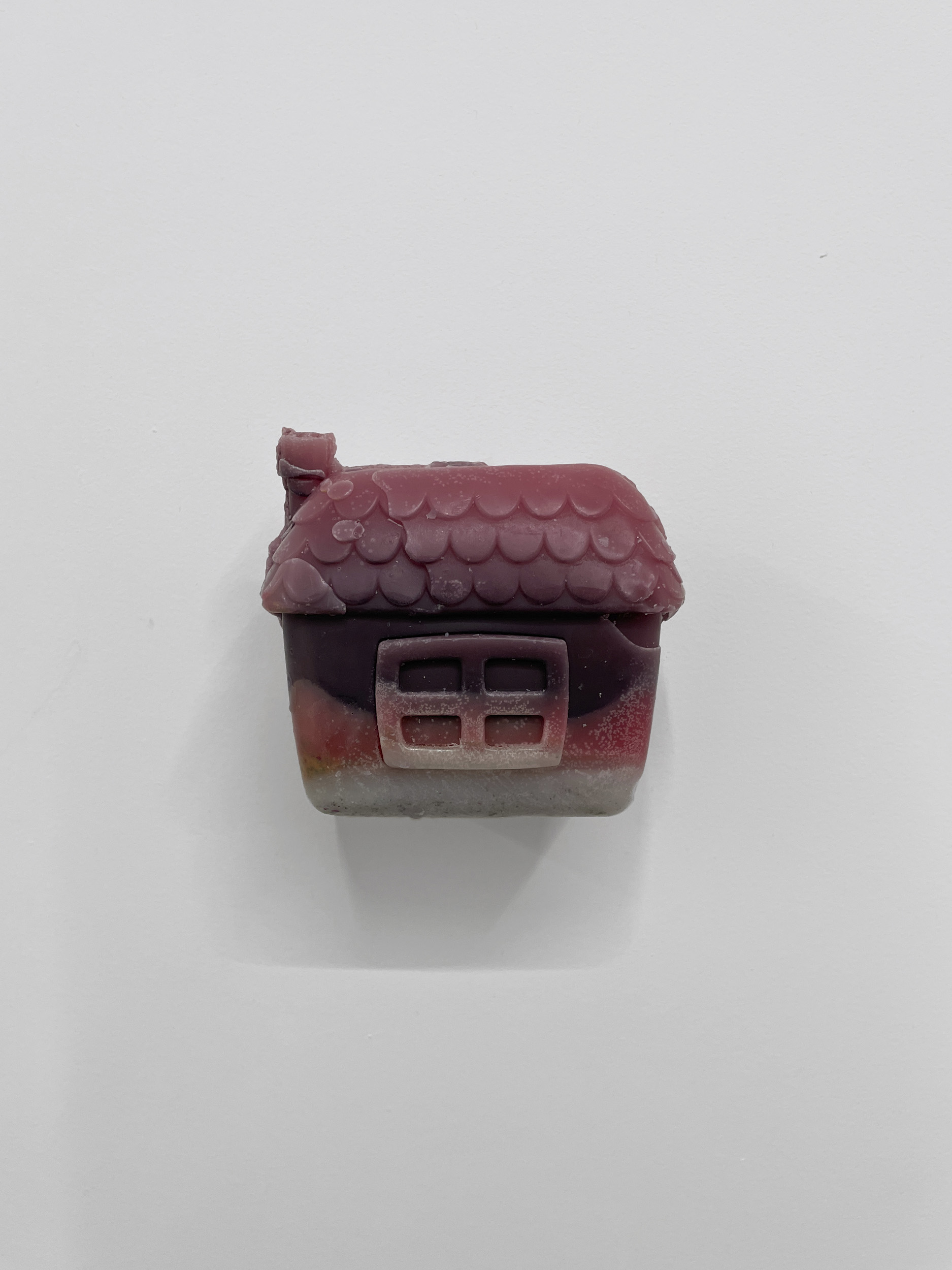
Melody Lu,
Croque souris-chat-trou, the sorrowful little souris, has lost track of
herx home. shex found a juicy carrot and a pretty flower on top of
the mountain. shex wants to carry them down to his friends. can you
show herx how to reach the bottom of the mountain without falling
off the winding path ? 2, 2025
Wax
12 x 8 x 5 cm
Inquire
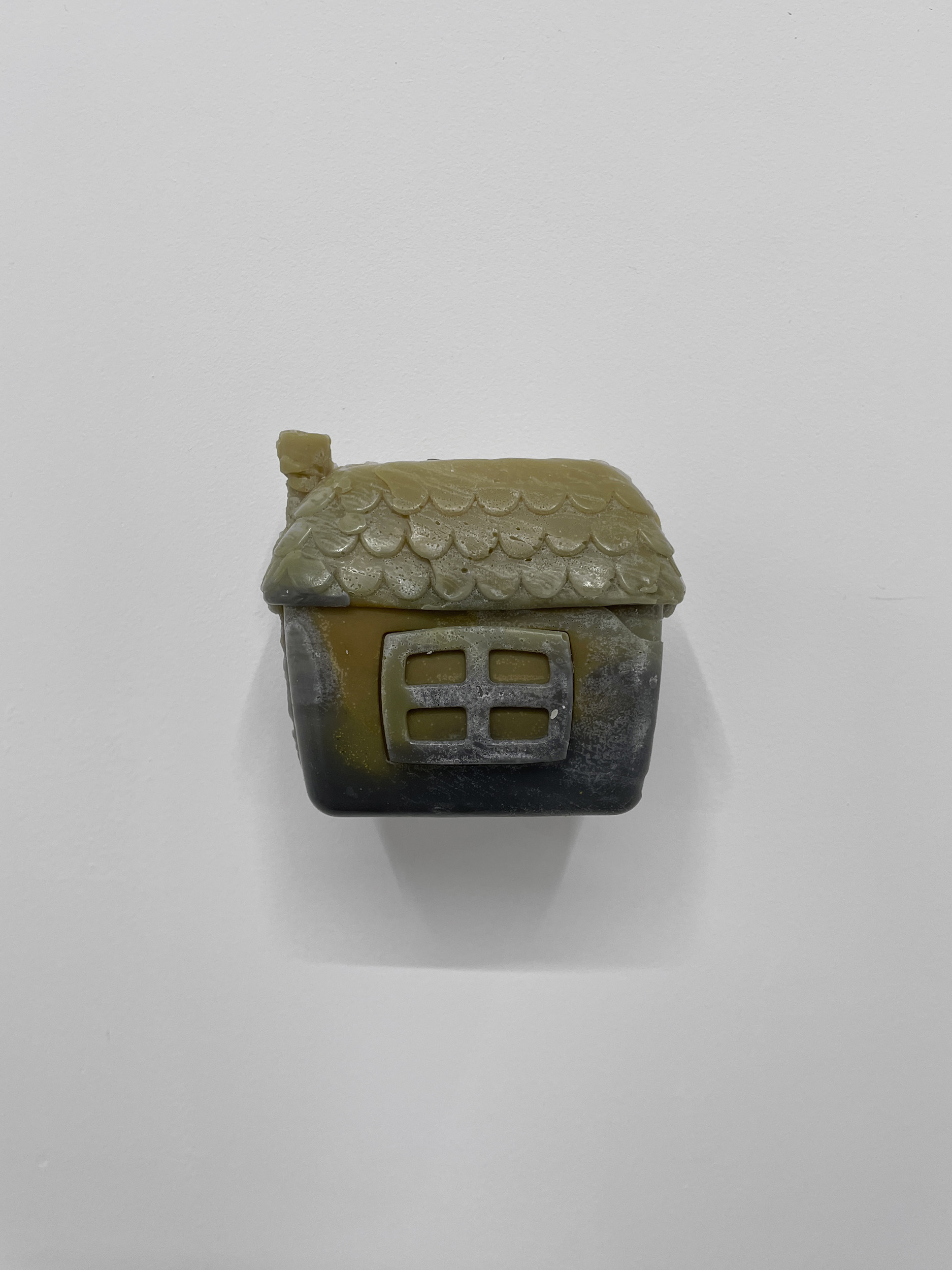
Melody Lu,
Croque souris-chat-trou, the sorrowful little souris, has lost track of
herx home. shex found a juicy carrot and a pretty flower on top of
the mountain. shex wants to carry them down to his friends. can you
show herx how to reach the bottom of the mountain without falling
off the winding path ? 3, 2025
Wax
12 x 8 x 5 cm
Inquire
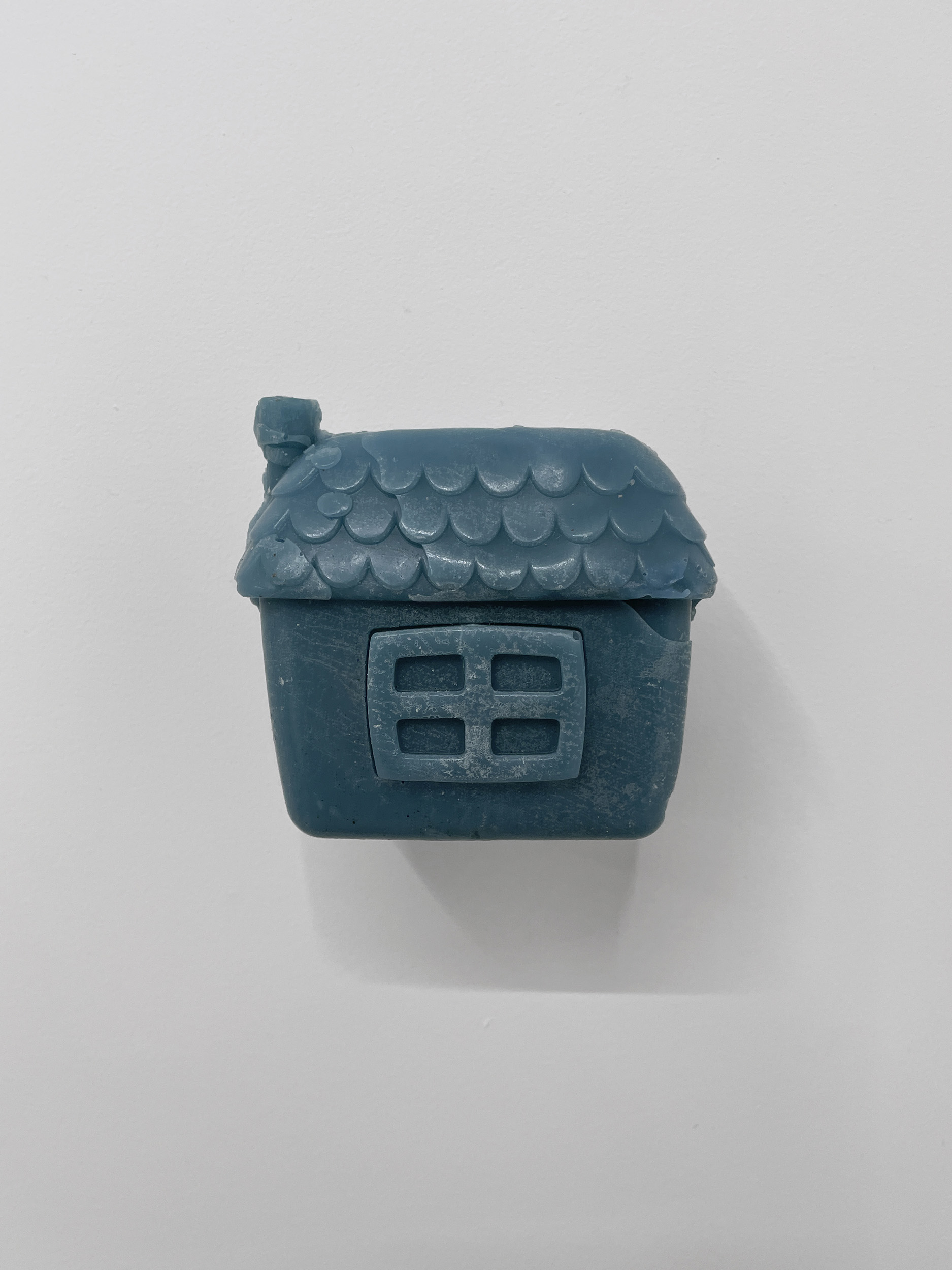
Melody Lu,
Croque souris-chat-trou, the sorrowful little souris, has lost track of
herx home. shex found a juicy carrot and a pretty flower on top of
the mountain. shex wants to carry them down to his friends. can you
show herx how to reach the bottom of the mountain without falling
off the winding path ? 4, 2025
Wax
12 x 8 x 5 cm
Inquire
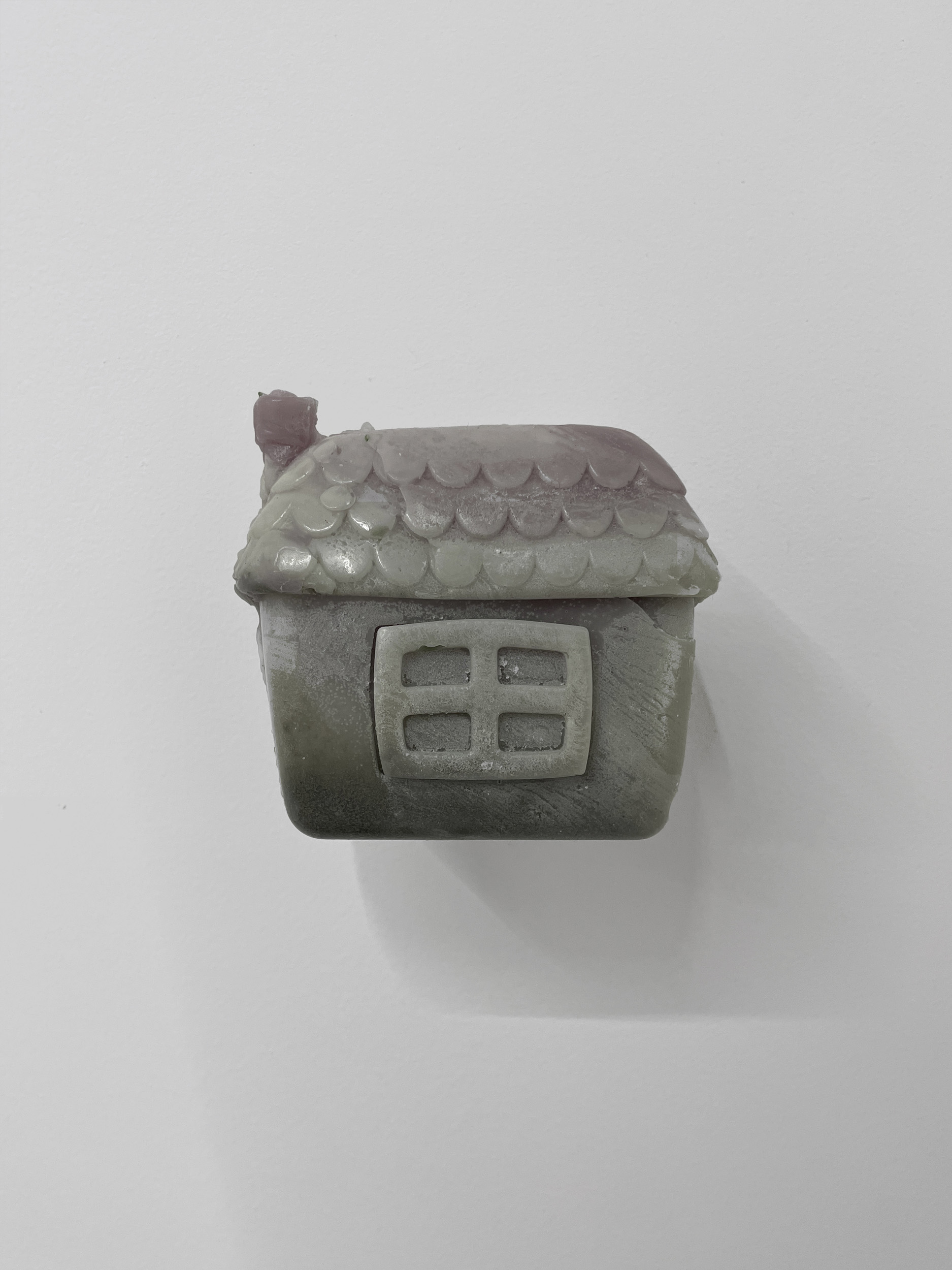
Melody Lu,
Croque souris-chat-trou, the sorrowful little souris, has lost track of
herx home. shex found a juicy carrot and a pretty flower on top of
the mountain. shex wants to carry them down to his friends. can you
show herx how to reach the bottom of the mountain without falling
off the winding path ? 5, 2025
Wax
12 x 8 x 5 cm
Inquire
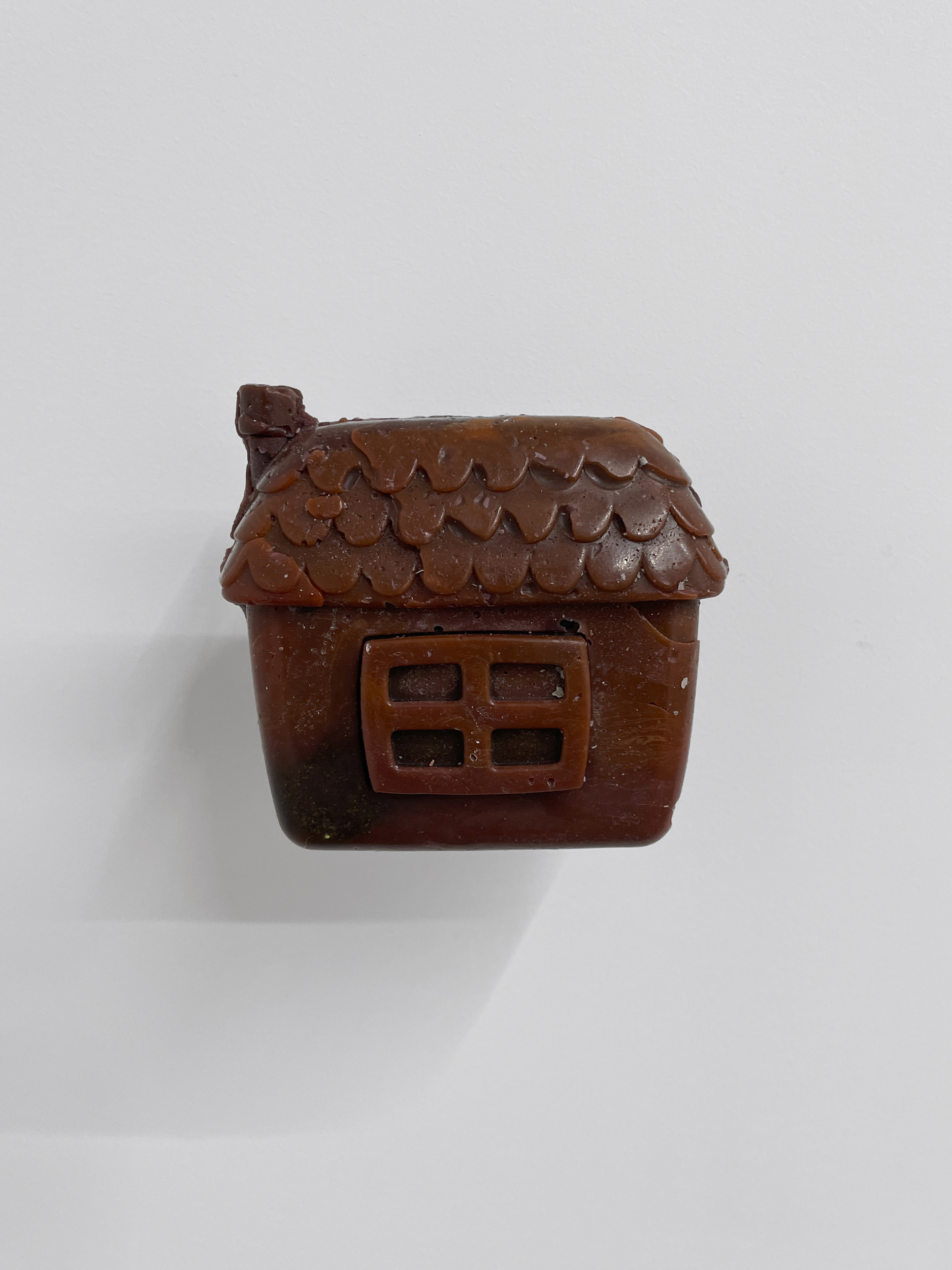
Melody Lu,
Croque souris-chat-trou, the sorrowful little souris, has lost track of
herx home. shex found a juicy carrot and a pretty flower on top of
the mountain. shex wants to carry them down to his friends. can you
show herx how to reach the bottom of the mountain without falling
off the winding path ? 6, 2025
Wax
12 x 8 x 5 cm
Inquire
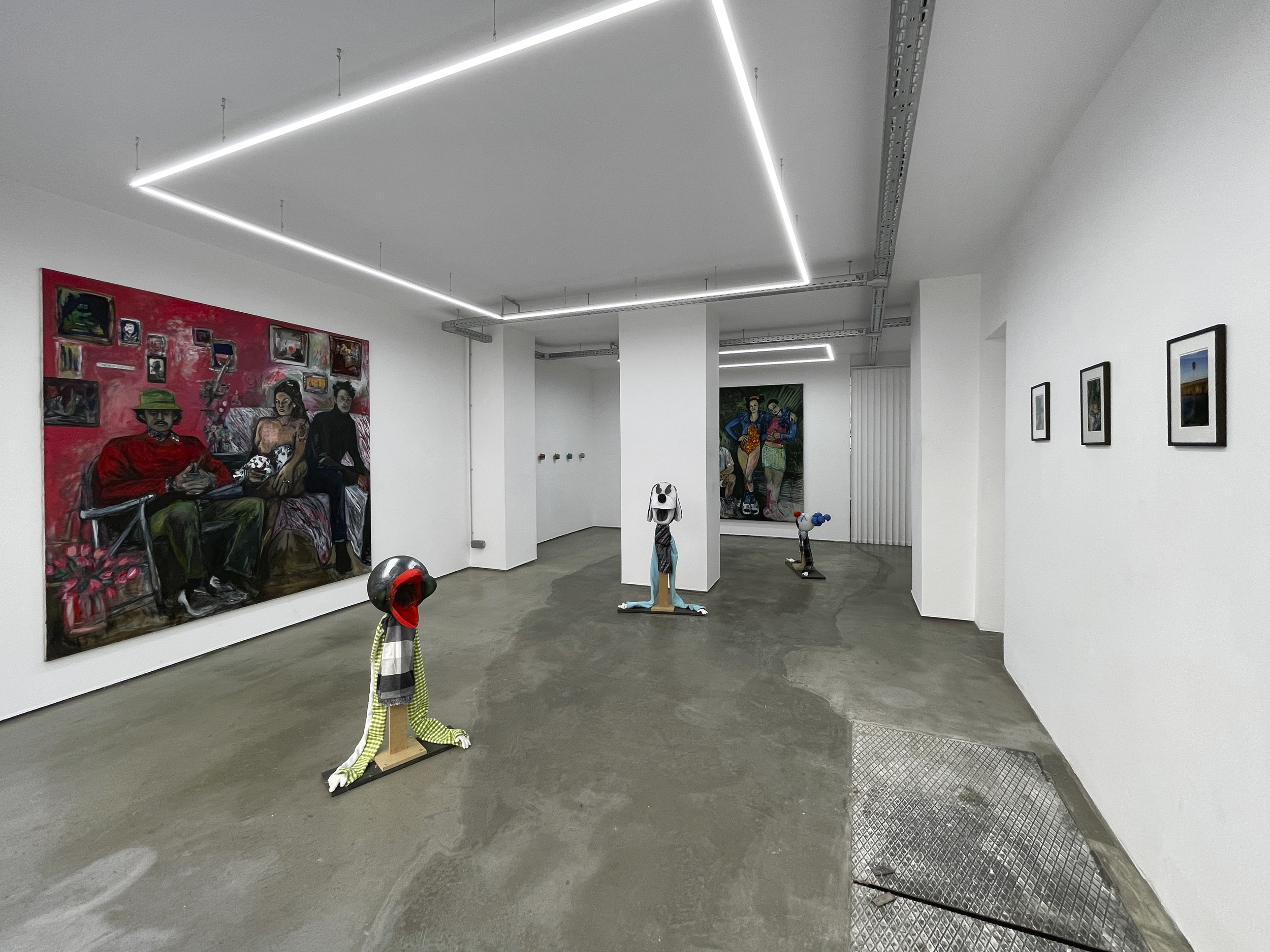
Les causes perdues, 2025
Exo Exo, Paris
*English below*
FR.
« Le phénomène relaté par Mme Mann (née Pauline Howes) est un bruit de respiration, qui se faisait entendre à certains
intervalles pendant la nuit. […] Cela faisait un peu l’effet d’une vieille personne qui respire, mais c’était plus fort qu’une
respiration humaine. […] Dès que la lumière était allumée, le bruit cessait [...] [1]. »
Depuis que Pauline a quitté sa chambre d’enfance pour s’installer dans la « petite chambre » spécialement aménagée pour
célébrer son passage à un âge plus mûr, un bruit de respiration l’accompagne la nuit sans explication. Comme d’autres, Pauline
a trouvé l’un de ces lieux et de ces moments où la contingence prend fin, où des effets persistent en l’absence de toute cause.
Ce ne sont que des instants courts et, heureusement peut-être pour elle, au matin la pression de l’interrupteur déclenchant
l’illumination de l’ampoule la ramène dans notre monde rassurant où chaque phénomène s’explique par une suite de présences.
Il n’est pas facile de négocier avec les respirations désincarnées qui nous entourent, et délaisser sa chambre d’enfance peut
souvent paraître être la bonne – ou la seule – solution. Pourtant que se serait-il passé si après avoir rallumé la lumière Pauline
avait décidé de continuer à suivre le souffle fantomatique de ses nuits, et si cette même lumière avait de nouveau éclairé sa
chambre de petite fille oubliée ? Plutôt que de toujours vouloir combler un vide entre les présences et les absences, en ignorant
donc tous les phénomènes d’entre-deux, n’est il pas plutôt possible de s’engouffrer dans le vide, de suivre la voie des spectres ?
C’est au seuil de ce territoire, entre la chambre d’enfant et l’obscurité, que pourraient se situer les gestes de Melody Lu, Ludivine
Gonthier et Thomas Cap de Ville. Ensembles i.els cumulent des objets, des lieux ou des images qui poursuivent les respirations
souterraines et les accueillent de nouveau. Leurs souvenirs se repeuplent ainsi de vieilles connaissances qui ne semblent jamais
avoir été vraiment oubliées, dans des chambres qui n’ont jamais été vraiment remplacées par d’autres. Ce refus de l’oubli
redonne forme à ce qui persiste encore quelque part, et constitue peut-être le noeud commun de leurs tentatives. Au mur, des
modèles réduits de maisons archétypales se dédoublent et se transforment, se liant entre eux par le même écho qui les habite.
Plus loin des silhouettes hantent les lieux clefs de l’adolescence pourtant révolue de Thomas. Il leur redonne des corps et des
visages qui malgré tout ne semblent jamais réussir à entièrement combler l’écart entre lui, eux et leurs souvenirs communs. Au
sol de vieux jouets d’enfance ont été de nouveau éclairés, on en constate alors les changements : comme nous ils ont grandi,
presque adultes et pourtant étrangement familiers, un peu trop tordus pour paraître entièrement adaptés à cet éclairage. Et puis
il y a aussi les fins de soirées. D’habitude, lorsqu’on y rallume la lumière le dance-floor se vide, et tout ce qui s’y est passé semble
déjà s’absenter en vitesse. Ici pourtant, sur les toiles, les ami.es nocturnes et leurs appartements restent fixes, bloqués dans une
commémoration infinie qui pourrait rassurer si il ne continuait pas d’y planer cet air de vanité.
Entre la présence et l’absence des effets orphelins de toute cause balbutient encore. Ils sont là, à ranimer, attendant la bonne
concordance pour s’illuminer de nouveau, c’est-à-dire se rendre présents en charriant avec eux ce qu’il y reste d’absent. Non,
ce ne sont pas des apparitions, plutôt des réapparitions, toujours métamorphosées dans leur bégaiement, s’effectuant d’elles
mêmes sans plus avoir besoin de cause effectives. Leur murmure était toujours et déjà là, il se répétait au creux des oreilles
attentives. Désormais en fermant les yeux il m’a presque l’air possible de me retrouver devant les dessins animés du dimanche
matin (ceux de mon enfance ou d’un lendemain de soirée, la différence n’est qu’anecdotique). Je me rejoue cet épisode de Scooby-
Doo dans lequel ils démasquent le fantôme du château hanté pour découvrir que ce n’était qu’un costume. Mais je choisis de rouvrir
les yeux au moment de la révélation. Ce fantôme là restera à jamais un fantôme et je peux laisser cette scène se répéter en moi sans
plus vouloir lui trouver une cause, n’en préservant que l’effet solitaire.
– Simon Bensussan
[1] Paul Guénault, Rapport d’enquête du 17 avril 1936 faisant état des phénomènes paranormaux vécus par Pauline Howes Mann et investigués par la
Society for Pyschical Research, Leeds University, tel que traduit de l’anglais et cité par Grégory Delaplace dans Les intelligences particulières, Éditions
Vues de l’esprit, Bruxelles, 2021, p. 138
EN.
“The phenomenon related by Mrs. Mann (born Pauline Howes) is a breathing noise, which could be heard at certain
intervals during the night [...]. [...] It sounded a bit like an old person breathing, but it was louder than a human breath.
[...] As soon as the light was switched on, the noise ceased [...][1].”
Ever since Pauline moved out of her childhood bedroom to move into the “little room” specially designed to celebrate her
passage into a more mature age, a breathing sound accompanies her at night without explanation. Like others, Pauline has found
one of those places and moments when contingency comes to an end, when effects persist in the absence of any cause. These
are only brief moments and, perhaps fortunately for her, in the morning the pressure of the switch triggering the illumination
of the light bulb brings her back to our reassuring world where every phenomenon can be explained by a series of presences.
It’s not easy to negotiate with the disembodied breaths that surround us, and forsaking one’s childhood bedroom can often
seem like the right - or only - solution. Yet what would have happened if, after turning the light back on, Pauline had decided to
continue following the ghostly breath of her nights, and if that same light had once again illuminated her forgotten little girl’s
room? Rather than always trying to fill the void between presences and absences, ignoring all the phenomena of the in-between,
isn’t it possible to step into the void, to follow the path of the spectres ?
It’s on the threshold of this territory, between a child’s bedroom and darkness, that the gestures of Melody Lu, Ludivine Gonthier
and Thomas Cap de Ville could be situated. Together they accumulate objects, places or images that pursue underground
breaths and welcome them back. Their memories are thus repopulated with old acquaintances who never seem to have been
truly forgotten, in rooms that have never really been replaced by others. This refusal to forget gives shape to what still persists
somewhere, and perhaps constitutes the common knot of their attempts. On the wall, scale models of archetypal houses
duplicate and transform themselves, linked together by the same echo that inhabits them. Further on, silhouettes haunt the
key places of Thomas’s bygone adolescence. He restores their bodies and faces, but they never seem to fully bridge the gap
between him, them and their shared memories. On the floor, old childhood toys have been lit up again, and we can see how
they’ve changed: like us, they’ve grown up, almost adult yet strangely familiar, a little too twisted to seem entirely suited to this
lighting. And then there’s the late nights. Usually, when we turn the lights back on, the dance-floor is emptied, and everything
that happened there already seems to be disappearing in a hurry. But here, on the canvases, the nocturnal friends and their
apartments remain still, stuck in an infinite commemoration that might be reassuring if it weren’t for the lingering air of vanity.
Between presence and absence, effects orphaned of any cause still stammer. There they are, to be revived, waiting for the right
concordance to light up again, that is, to make themselves present by carrying with them what remains absent. No, these are
not apparitions, rather reappearances, always metamorphosed in their stammering, taking place of their own accord, no longer
needing an effective cause. Their murmur was always and already there, repeating itself in the hollows of attentive ears. Now, by
closing my eyes, it almost seems possible to find myself in front of Sunday morning cartoons (those of my childhood or of theday after a party, the difference is only anecdotal). I replay that Scooby-Doo episode in which they unmask the ghost in the haunted
castle, only to discover that it was just a costume. But I choose to reopen my eyes at the moment of revelation. That particular ghost
will remain a ghost forever, and I can let the scene repeat itself in me without any desire to find a cause, preserving only the solitary
effect.
– Simon Bensussan
[1] Paul Guénault, Rapport d’enquête du 17 avril 1936 faisant état des phénomènes paranormaux vécus par Pauline Howes Mann et investigés par la
Society for Pyschical Research, Leeds University, translated in english from the french translation and quote by Grégory Delaplace in Les intelligences
particulières, Éditions Vues de l’esprit, Bruxelles, 2021, p. 138
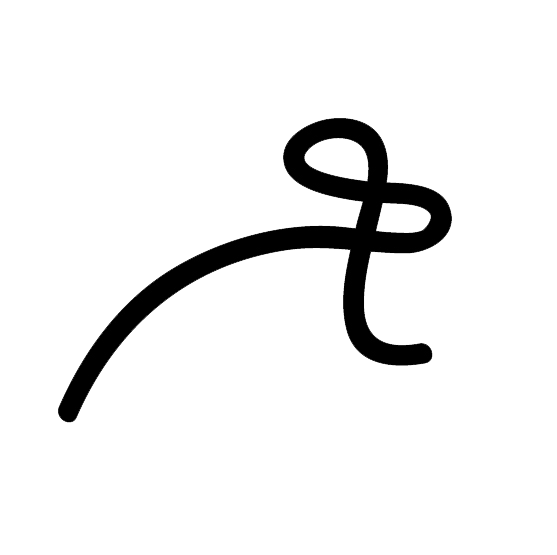
 Les causes perdues, 2025
Les causes perdues, 2025 Les causes perdues, 2025
Les causes perdues, 2025 Ludivine Gonthier, Sacha, Robin et Ludivine 2, 2024
Ludivine Gonthier, Sacha, Robin et Ludivine 2, 2024 Les causes perdues, 2025
Les causes perdues, 2025 Melody Lu, Chien, clown, oiseau, réunix pour des lectures performances qui n’auront
pas lieu ici (chien), 2025
Melody Lu, Chien, clown, oiseau, réunix pour des lectures performances qui n’auront
pas lieu ici (chien), 2025 Melody Lu, Chien, clown, oiseau, réunix pour des lectures performances qui n’auront
pas lieu ici (chien), 2025
Melody Lu, Chien, clown, oiseau, réunix pour des lectures performances qui n’auront
pas lieu ici (chien), 2025 Melody Lu, Chien, clown, oiseau, réunix pour des lectures performances qui n’auront
pas lieu ici (oiseau), 2025
Melody Lu, Chien, clown, oiseau, réunix pour des lectures performances qui n’auront
pas lieu ici (oiseau), 2025 Melody Lu, Chien, clown, oiseau, réunix pour des lectures performances qui n’auront
pas lieu ici (oiseau), 2025
Melody Lu, Chien, clown, oiseau, réunix pour des lectures performances qui n’auront
pas lieu ici (oiseau), 2025 Les causes perdues, 2025
Les causes perdues, 2025 Les causes perdues, 2025
Les causes perdues, 2025 Thomas Cap de Ville, Ignatius 1, 2025
Thomas Cap de Ville, Ignatius 1, 2025 Thomas Cap de Ville, Gordelio 1, 2025
Thomas Cap de Ville, Gordelio 1, 2025 Thomas Cap de Ville, Gordelio 2, 2025
Thomas Cap de Ville, Gordelio 2, 2025 Thomas Cap de Ville, Ignatius 2, 2025
Thomas Cap de Ville, Ignatius 2, 2025 Les causes perdues, 2025
Les causes perdues, 2025 Les causes perdues, 2025
Les causes perdues, 2025 Les causes perdues, 2025
Les causes perdues, 2025 Les causes perdues, 2025
Les causes perdues, 2025 Melody Lu, Chien, clown, oiseau, réunix pour des lectures performances qui n’auront
pas lieu ici (clown), 2025
Melody Lu, Chien, clown, oiseau, réunix pour des lectures performances qui n’auront
pas lieu ici (clown), 2025 Melody Lu, Chien, clown, oiseau, réunix pour des lectures performances qui n’auront
pas lieu ici (clown), 2025
Melody Lu, Chien, clown, oiseau, réunix pour des lectures performances qui n’auront
pas lieu ici (clown), 2025 Thomas Cap de Ville, Ignatius 3, 2025
Thomas Cap de Ville, Ignatius 3, 2025 Les causes perdues, 2025
Les causes perdues, 2025 Ludivine Gonthier, Pierre, Charles, Marie et Ludivine, 2025
Ludivine Gonthier, Pierre, Charles, Marie et Ludivine, 2025 Les causes perdues, 2025
Les causes perdues, 2025 Les causes perdues, 2025
Les causes perdues, 2025 Les causes perdues, 2025
Les causes perdues, 2025 Melody Lu, Croque souris-chat-trou, the sorrowful little souris, has lost track of
herx home. shex found a juicy carrot and a pretty flower on top of
the mountain. shex wants to carry them down to his friends. can you
show herx how to reach the bottom of the mountain without falling
off the winding path ? 1, 2025
Melody Lu, Croque souris-chat-trou, the sorrowful little souris, has lost track of
herx home. shex found a juicy carrot and a pretty flower on top of
the mountain. shex wants to carry them down to his friends. can you
show herx how to reach the bottom of the mountain without falling
off the winding path ? 1, 2025 Melody Lu, Croque souris-chat-trou, the sorrowful little souris, has lost track of
herx home. shex found a juicy carrot and a pretty flower on top of
the mountain. shex wants to carry them down to his friends. can you
show herx how to reach the bottom of the mountain without falling
off the winding path ? 2, 2025
Melody Lu, Croque souris-chat-trou, the sorrowful little souris, has lost track of
herx home. shex found a juicy carrot and a pretty flower on top of
the mountain. shex wants to carry them down to his friends. can you
show herx how to reach the bottom of the mountain without falling
off the winding path ? 2, 2025 Melody Lu, Croque souris-chat-trou, the sorrowful little souris, has lost track of
herx home. shex found a juicy carrot and a pretty flower on top of
the mountain. shex wants to carry them down to his friends. can you
show herx how to reach the bottom of the mountain without falling
off the winding path ? 3, 2025
Melody Lu, Croque souris-chat-trou, the sorrowful little souris, has lost track of
herx home. shex found a juicy carrot and a pretty flower on top of
the mountain. shex wants to carry them down to his friends. can you
show herx how to reach the bottom of the mountain without falling
off the winding path ? 3, 2025 Melody Lu, Croque souris-chat-trou, the sorrowful little souris, has lost track of
herx home. shex found a juicy carrot and a pretty flower on top of
the mountain. shex wants to carry them down to his friends. can you
show herx how to reach the bottom of the mountain without falling
off the winding path ? 4, 2025
Melody Lu, Croque souris-chat-trou, the sorrowful little souris, has lost track of
herx home. shex found a juicy carrot and a pretty flower on top of
the mountain. shex wants to carry them down to his friends. can you
show herx how to reach the bottom of the mountain without falling
off the winding path ? 4, 2025 Melody Lu, Croque souris-chat-trou, the sorrowful little souris, has lost track of
herx home. shex found a juicy carrot and a pretty flower on top of
the mountain. shex wants to carry them down to his friends. can you
show herx how to reach the bottom of the mountain without falling
off the winding path ? 5, 2025
Melody Lu, Croque souris-chat-trou, the sorrowful little souris, has lost track of
herx home. shex found a juicy carrot and a pretty flower on top of
the mountain. shex wants to carry them down to his friends. can you
show herx how to reach the bottom of the mountain without falling
off the winding path ? 5, 2025 Melody Lu, Croque souris-chat-trou, the sorrowful little souris, has lost track of
herx home. shex found a juicy carrot and a pretty flower on top of
the mountain. shex wants to carry them down to his friends. can you
show herx how to reach the bottom of the mountain without falling
off the winding path ? 6, 2025
Melody Lu, Croque souris-chat-trou, the sorrowful little souris, has lost track of
herx home. shex found a juicy carrot and a pretty flower on top of
the mountain. shex wants to carry them down to his friends. can you
show herx how to reach the bottom of the mountain without falling
off the winding path ? 6, 2025 Les causes perdues, 2025
Les causes perdues, 2025